






Make a meaningful impact in your community by becoming the owner of a Natural Awakenings magazine.
Empower others with current, valuable insights and resources to enhance their physical, mental, emotional and spiritual well-being.
As a franchise owner, you’ll inspire positive change, provide readers with tools for healthier living and connect local businesses with an audience eager for transformation.
Why Own a Natural Awakenings Magazine?
n Create a Healthier Community: Be the go-to resource for wellness and personal growth in your area.
n Boost Your Income: Take control of your financial future with a proven business model.
n Enjoy a Flexible Lifestyle: Work from home while pursuing a fulfilling, dynamic career.
n A proven business model with low startup costs.
n Comprehensive training and friendly, ongoing support.
n Flexible work schedule with many work-from-home opportunities.
n Access to a network of like-minded franchise owners.
n Financing Options Available.
Join a thriving network of passionate franchise owners reshaping the future of holistic health and wellness.
Call 239-206-2000 for a FREE evaluation of your community’s potential. Learn more or apply today at:
Corp.NaturalAwakenings.com

Call for a free evaluation of your community's potential at 239-206-2000. To apply or learn more, visit Corp.NaturalAwakenings.com.
Add Your Community to Where Natural Awakenings Is Now Publishing:
• Atlanta, GA
• Boston, MA
• Broward County, FL
• Bucks/Montgomery Counties, PA
• Central Florida/Greater Orlando, FL
• Central New Jersey
• Charlotte, NC
• Chicago, IL
• Columbia, SC
• Dallas, TX
• Daytona/Volusia/Flagler Counties, FL
• Detroit/Wayne County, MI
• Fairfield & Southern Litchfield Counties, CT
• Grand Traverse Region/Northern Michigan
• Greater Ann Arbor, MI
• Greater Lansing, MI
• Greater Oakland, Macomb, Livingston, Genesee, MI
• Gulf Coast, Alabama/Mississippi
• Houston, TX
• Jacksonville/St. Augustine, FL
• Lancaster/Berks, PA
• Lehigh Valley, PA
• Long Island, NY
• Milwaukee, WI
• Monmouth/Ocean Counties, NJ
• Naples/Fort Myers, FL
• New York City, NY
• North Central New Jersey
• North New Jersey
• Northwest Florida
• Palm Beach, FL
• Philadelphia, PA
• Rhode Island
• Richmond, VA
• Sarasota, Manatee, Charlotte and DeSoto Counties, FL
• South Central Pennsylvania
• South Jersey, NJ
• Southeast North Carolina
• Space & Treasure Coast, FL
• Tampa, FL
• Tucson, AZ
• Twin Cities, MN
• Westchester/Putnam/Dutchess, NY
• Western Michigan
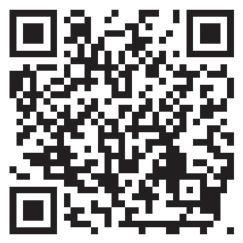




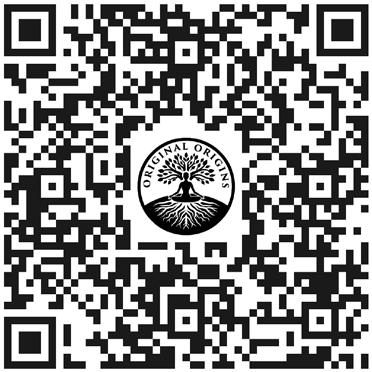
Publisher Tracy Jacox-Gunter
Editor Sara Gurgen
Design, Production & Digital Marketing Kristina Parella
Contributing Writers Michaela Leung Tiana Tarver
Distribution Manager Larry Gunter Ad Design Lauren Arabis Website Matthew Davis
MsTracy@MidlandsNA.com
Tracy Jacox-Gunter Ph: 839-228-1158
Website
ColumbiaNaturalAwakenings.com

Save a Tree Scan Me
CEO Kimberly B. Whittle
National Editor Sandra Yeyati
Editor Brooke Goode
Copy Editor/Proofing Melanie Rankin
Layout Flip180 Media
Natural Awakenings
Publishing Corporation
350 Main Street, Suite 9B
Bedminster, NJ 07921
Ph: 239-206-2000
NaturalAwakenings@KnoWEwell.com
Cover image by Adobe Stock #634864681

Natural Awakenings is printed on partially recycled and fully recyclable newsprint with black soy ink.
© 2025 by Natural Awakenings. All rights reserved. Although some parts of this publication may be reproduced and reprinted, we require that prior permission be obtained in writing.
Natural Awakenings is a free publication distributed locally and is supported by our advertisers. Please call to find a location near you or if you would like copies placed at your business. We do not necessarily endorse the views expressed in the articles and advertisements, nor are we responsible for the products and services advertised. Check with a healthcare professional regarding the appropriate use of any treatment.

Dear Natural Awakenings family,
As the crisp air of November settles in and the leaves complete their golden dance to the ground, my heart feels especially full this year. Gratitude has always been the heartbeat of this season, but this November, it feels deeper, richer and more personal than ever. You see, I’ve been blessed with the arrival of my third grandchild—and with that, my role as “Big Mama” expands in the most beautiful way.
There is something sacred about the generational flow of love. Each grandchild carries a piece of history and a glimpse of the future. My first taught me the sheer delight of being called Big Mama for the very first time. My second brought a rhythm of joy that reminded me of life’s spontaneity. And now, this newest blessing has added yet another layer of fullness to my heart. Together, they are my living legacy—daily reminders that love multiplies, never divides, with each new heartbeat.
Being called Big Mama is more than a name—it is a calling. It means being the lap where little ones feel safe, the voice that shares wisdom passed down through generations, and the heart that holds space for each child’s unique light to shine. It also means modeling gratitude not only in the grand moments, like welcoming a new baby, but in the small and ordinary ones too.
Gratitude isn’t just about giving thanks for the blessings we can see, but also for the space to grow into who we’re meant to be. It’s about appreciating the process as much as the outcome. Just as autumn teaches us to let go of what no longer serves us, gratitude teaches us to hold fast to what matters most. Family, love, health, purpose—these are the treasures that shine brighter than gold. I encourage you to pause and reflect on your own seasons of gratitude. When we begin to notice the abundance in our lives, we discover that gratitude multiplies, opening the door to even more blessings.
As I cradle my new grandson and watch my older grands run, laugh and discover the world, I’m reminded that legacy is not about what we leave behind but what we pour into the lives we touch right now. For me, that begins with being Big Mama—grateful, present and overflowing with love.
May this season of gratitude remind you of the abundance already within your reach and the joy of embracing both the milestones and the moments in between.
Gratitude and joy,

�� Follow Our New Facebook Page!
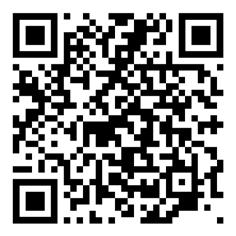







Grammy Award winner and seven-time nominee Louie Vega brings his legendary house music sound to South Carolina on Saturday, November 8, from 5 to 11:59 p.m. at the Landing Event Center (Delta Lounge), in Cayce. The Veteran’s Day Weekend celebration also features Detroit’s “Godmother of House,” Stacey “Hotwaxx” Hale, along with Columbia House Music Project’s DJ duo Kelly Kel and Katt in the Hat.
Limited advance tickets are available, and early arrival is encouraged. RVs and campers are welcome. Location: 1832 Airport Blvd., Cayce. For more information, including cost, or to purchase tickets, visit Eventbrite.com/e/louie-vega-south-carolina-house-music-veterans-day-wknd-tickets-1689520755059?aff=oddtdtcreator.





Every Thursday from 8 to 11 p.m., The Aristocrat, in Columbia, hosts a free jazz party featuring the Amos Hoffman Trio. The trio kicks off the evening with a set, followed by guest musicians that are invited to sit in for a lively jam session.
Location: 1001 Washington St., Columbia. For more information, visit ExperienceColumbiaSC. com/event/jazz-party-at-the-aristocrat/68104.
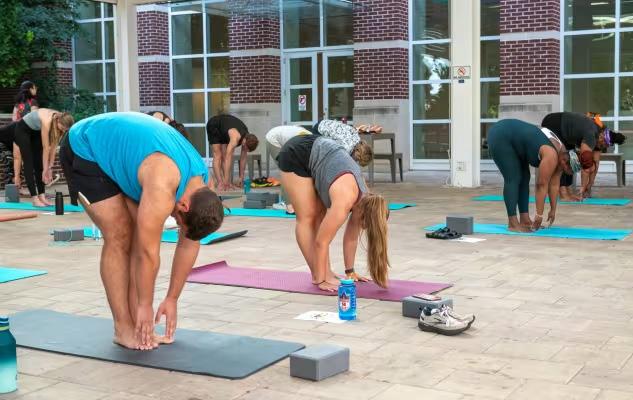




On Wednesdays, November 5 and 12, from 8 to 9 a.m., Juliet Hewitt, yoga program manager for Corazon Holistic Health, leads a yoga class on Boyd Plaza in Columbia. The class is designed for beginners and seasoned practitioners alike, focusing on the shapes and alignment of basic yoga poses, with variations of sun salutations. Breathwork and meditation round out this energizing, before-work practice. Mats are provided, though participants may bring their own. The class is open to ages 15 and up; no unaccompanied minors.
Cost: $15 or $12 for members. Location: 1515 Main St., Columbia. For more information, visit ExperienceColumbiaSC.com/ event/yoga-on-the-plaza/72918.

South Carolina residents and visitors are invited to the annual Governor’s Carolighting on Sunday, November 23, from 6 to 7 p.m. on the State House grounds. The free holiday tradition features a visit from Santa, a South Carolina pop-up shop, live music from South Carolina artists, and the official countdown to the lighting of the state Christmas tree.
Location: 1100 Gervais St., Columbia. For more information, visit ExperienceColumbiaSC. com/event/governors-carolighting/71896.

The South Carolina Military Museum is showcasing its new exhibit, High Altitude Service, highlighting the state’s contributions to space exploration. The exhibit is open to the public through Wednesday, December 31, from 9 a.m. to 4 p.m.
Admission is free. Location: 1 National Guard Rd., Columbia. For more information, call 803299-4440 or visit SCMilitaryMuseum.com.

Columbia residents and visitors can join a special walking tour of public art on Thursday, November 6, from 6 to 7:30 p.m., starting at the Columbia Museum of Art (CMA). The experience begins with a gallery tour of Keith Haring: Radiant Vision, led by CMA Curator of Education Glenna Barlow, followed by a walking tour of public artworks in the Main Street District with Pamela Zeljak of One Columbia for Arts & Culture.

Haring’s iconic work is celebrated for its bold visual language and passionate advocacy of social justice, public health and human rights. Inspired by his legacy, the walking tour highlights downtown pieces that use art to spark awareness, inspire action and build community around critical causes. As participants explore each piece, they can consider how public art can be a force for change—amplifying voices, transforming spaces, and reminding us that creativity and compassion are deeply connected.
The tour covers a round-trip, five-block route starting inside the museum. Comfortable walking shoes and clothing are recommended.
Cost: Free as part of Free First Thursday at the CMA. Registration required as space is limited. Location: 1515 Main St., Columbia. For more information or to register, visit ColumbiaMuseum.org/events/walking-tour-public-art-cause.

R&B icons Brandy and Monica bring The Boy Is Mine Tour to the Colonial Life Arena, in Columbia, on Friday, November 14, at 8 p.m. Fans can enjoy an unforgettable night as the Grammy Award-winning artists perform their chart-topping hits and celebrate the enduring legacy of their 1998 collaboration,
Location: 801 Lincoln St., Columbia. For more information, including cost, or to purchase tickets, visit ColonialLifeArena.com/events/detail/brandy-monica.


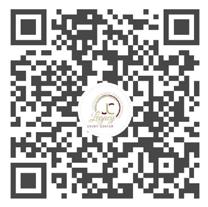

Riverbanks Zoo and Garden is offering guests a one-of-a-kind experience in the Botanical Garden with the award-winning, record-breaking exhibition Sean Kenney’s Nature Connects Made With LEGO Bricks. This acclaimed traveling exhibition features awe-inspiring, larger-than-life sculptures crafted from millions of toy blocks, inviting guests to explore themes such as animal endangerment, the balance of ecosystems, and humanity’s relationship with the natural world.
From now until Friday, February 20, guests will have an opportunity to immerse themselves in the beauty of nature and the artistry of the sculptures, sparking inspiration to create their own masterpieces at home. The exhibition, produced by Imagine, has visited nearly 100 cities worldwide and is celebrated for its ability to surprise and delight guests of all ages.
Nature Connects reflects important topics that Amsterdam-based artist Kenney holds dear, from protecting animal habitats and planting gardens to choosing sustainable transportation. The exhibition highlights how everything in nature is interconnected in a delicate balance.
Cost: Included with admission or membership. Location: 500 Wildlife Pkwy., Columbia. For more information, visit Riverbanks.org/botanical-garden/downloads/nature-connects.pdf.


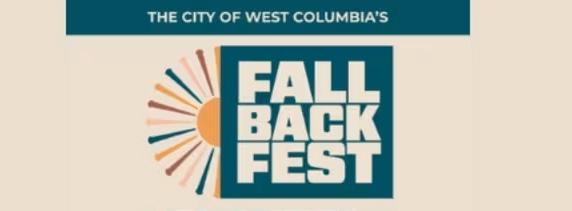
West Columbia invites the community to its ninth annual Fall Back Fest on Friday, November 7, from 5:30 to 9:30 p.m. on State Street. The free festival features live music from Civil Remedy and Lola Grace & the Night, interactive mural painting, local food and drinks, and the Meeting Street Artisan Market Night Edition.
Location: 100-300 State St., West Columbia. For more information, call 803-9398613 or visit ExperienceColumbiaSC.com/ event/9th-annual-fall-back-fest/72986.

The South Carolina State Museum is offering $1 general admission from noon to 5 p.m. on the first Sunday of every month through sponsorship by BlueCross BlueShield of South Carolina. Visitors can explore four floors of art, cultural history, natural history and science/technology, including the Boeing Observatory and the Robert B. Arial Collection of Historical Astronomy on the fourth floor.
For an additional fee, guests can enjoy a planetarium show or a 4D theater movie. The offer is not valid with other discounts or Museums for All.
Location: 301 Gervais St., Columbia. For more information, visit SCMuseum.org/ events/first-sunday.

Lexington residents and visitors can attend the sixth annual Holiday Market on Friday, November 7, and Saturday, November 8, from 10 a.m. to 1 p.m. at the Rosenwald Community Learning Center. The free event offers a wide variety of unique gifts while supporting talented individuals in the disabilities and special needs community.
Many market items are crafted by individuals with disabilities and special needs, showcasing their creativity and skills. Attendees can also enjoy a Sensory Santa experience provided by Santa’s Heroes.
Location: 420 Hendrix St., Lexington. For more information, call 803-898-5617 or visit ddsn. sc.gov/about-us/statewide-events-calendar.
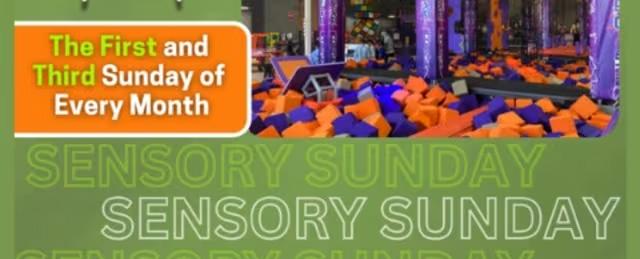
Surge Adventure Park, in Columbia, invites children with special needs to enjoy a calmer, more inclusive experience during Sensory Sunday, held on the first and third Sunday of every month from 10 a.m. to noon. During this special time, the park is closed to the general public and offers a quieter environment without loud music or flashing lights—allowing kids to play and explore at their own pace.
Cost: $7.99 per person, per hour. Location: 230 Business Park Blvd., Columbia. For more information or to purchase tickets, visit SurgeFun.com/locations/columbia/specials.

The South Carolina State Museum (SCSM), in Columbia, is now showcasing Heroes & Villains: The Art of the Disney Costume, a blockbuster exhibition created by the Walt Disney Archives. On view through Sunday, January 4, the critically acclaimed display features more than 70 costumes from beloved characters such as Cinderella, Maleficent and others. The exhibit explores the creativity and craftsmanship behind the iconic looks that help bring Disney’s most memorable heroes and villains to life.
Location: 301 Gervais St., Columbia. For more information, including cost, or to purchase tickets, visit ExperienceColumbiaSC.com/event/heroes-%26-villans%3a-the-art-of-the-disney-costume/71925.

Columbia’s Five Points district will sparkle with NEON Joy on Friday, November 21, from 6 to 9 p.m. The free family-friendly celebration features a dazzling holiday laser light show, festive shopping and surprises throughout the evening.
Visitors can enjoy extended shopping hours, sip-andshop specials, giveaways and special guest appearances by Santa and Mrs. Claus.
Location: Five Points, Columbia. For more information, visit FivePointsColumbia.com/events/ neon-joy.
Columbia music fans can experience the Jonas Brothers’ Living the Dream Tour at the Colonial Life Arena on Thursday, November 6. Doors open at 6:30 p.m., and the night will feature special guest The All-American Rejects, along with performances by Nick, DNCE, Joe, and The Administration.

Location: 801 Lincoln St., Columbia. For more information, including cost, or to purchase tickets, visit ExperienceColumbiaSC.com/event/jonas-brothers%3a-greetings-from-your-hometown-tour/72449.
Make sure to let our advertisers know you found them in

Kundalini yoga focuses on personal growth and spiritual connection through movement, breathing, meditation and sound in the form of mantras or chants. A 2024 study in Translational Psychiatry examined its potential to help older women at risk for memory problems and dementia.
The study involved 63 women aged 50 and older that were experiencing early memory decline and increased dementia risk due to conditions like high blood pressure or diabetes. Participants were randomly assigned to either a kundalini yoga group or a memory enhancement training (MET) group. The MET group performed verbal and visual memory-building exercises. All of the women met weekly with an instructor and practiced for 12 minutes daily at home over 12 weeks.
The yoga group reported greater improvements in how they felt about their memory. Gene testing showed beneficial changes in biological pathways linked to aging and inflammation in the yoga group, which were absent in the MET group. Additionally, levels of a harmful inflammation-related protein rose in the MET group but remained stable in the yoga group.
Brain scans of a subset of participants indicated that the yoga group experienced increased brain size linked to memory, as well as enhanced connectivity between memory-related brain regions, while the MET group showed shrinkage in these areas.

A recent study in The Lancet Planetary Health assessed air pollution exposure in more than 750 pregnant women in Barcelona, Spain, using neurosonography imaging to examine their baby’s fetal brain structure during the third trimester. Researchers measured the mothers’ exposure to nitrogen dioxide, fine particles and black carbon at home, work and during daily travel. Black carbon forms when fossil fuels, wood or biologic materials burn incompletely.
The study revealed that higher exposure to these pollutants was linked to changes in the shape and size of certain brain structures. Fetuses exposed to higher levels of black carbon had larger fluid-filled spaces in the brain, a larger cerebellum and a shallower fold in the brain known as the Sylvian fissure. These changes suggest slower or altered brain development. The study also found that fetal brains may be most sensitive to the effects of pollution during the second and third trimesters of pregnancy.
Researchers at the University of California San Diego and Dartmouth College used advanced brain imaging and artificial intelligence to study how various interventions influence the brain’s perception of pain. The 2025 study, published in Biological Psychiatry, analyzed data from two previous trials involving 115 healthy adults randomly assigned to one of four groups.
The mindfulness meditation group was taught breathwork and how to observe their thoughts and feelings without judgment. The sham-mindfulness group did not receive proper mindfulness instructions. The placebo cream group received a cream without active ingredients. The control group listened to an audiobook. Each group completed four, 20-minute sessions of their assigned activities, followed by brain scans while pain was applied to their leg.
The researchers discovered that mindfulness meditation significantly reduced pain intensity and unpleasantness more than the other groups. Brain scans revealed that mindfulness meditation decreased activity in neural patterns associated with both physical pain and emotional response to pain.
These findings suggest that mindfulness meditation reduces pain by directly altering sensory and emotional pain processing in the brain, whereas the placebo effect changes pain expectations. Further research is needed to confirm that mindfulness meditation can produce similar results for people with chronic pain.
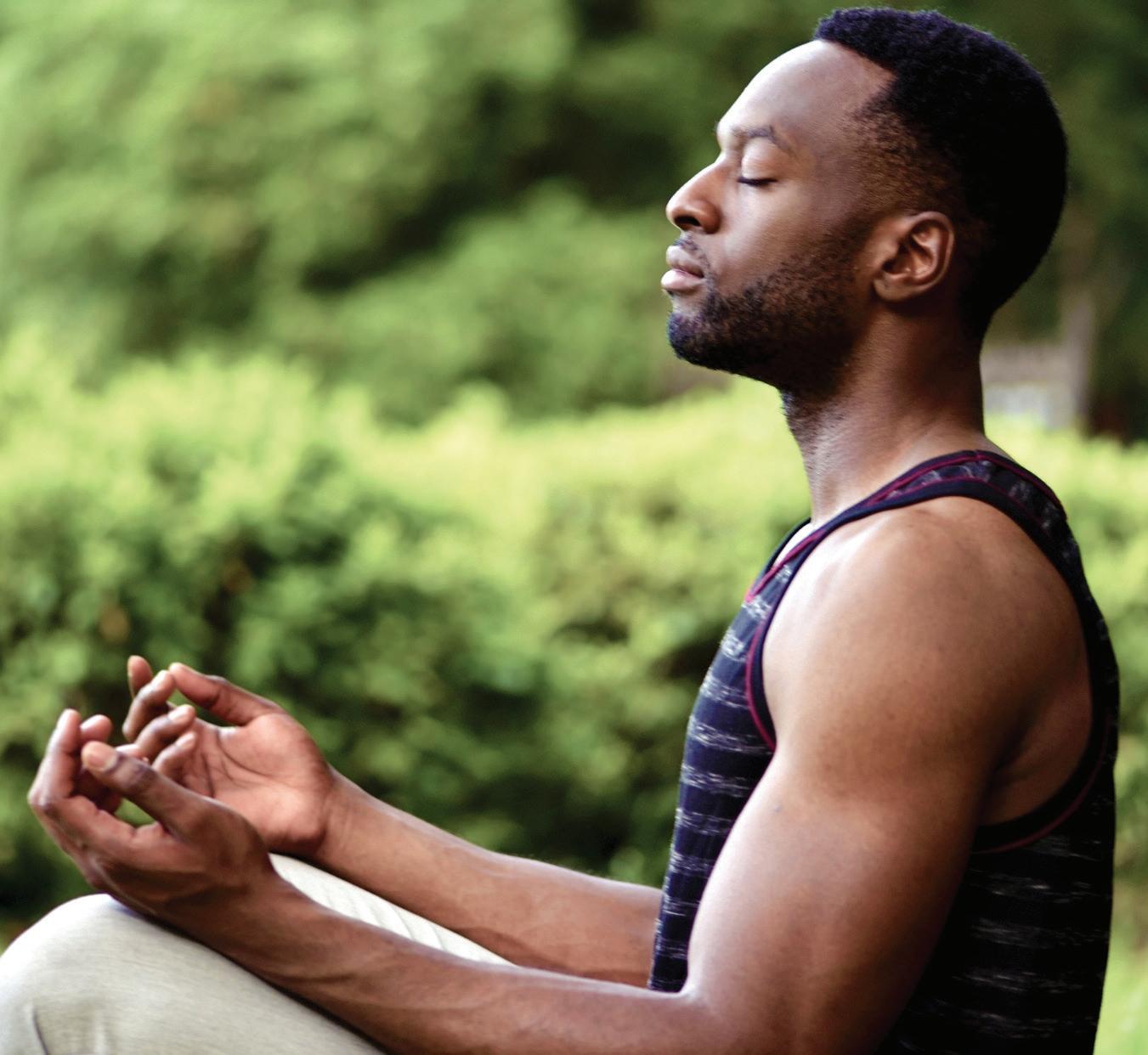
Researchers from Durham University in England surveyed more than 1,000 scientists, both astrobiologists and non-astrobiologists, to assess their beliefs about the existence of basic, complex and intelligent life beyond Earth. Their findings were published in nature astronomy. Almost 87 percent of astrobiologists agreed or strongly agreed that at least basic extraterrestrial life likely exists in the universe, while less than 2 percent disagreed and 12 percent remained neutral. Similarly, more than 88 percent of other scientists concurred that other life forms exist.
These results align with mathematical reasoning. With an estimated 100 billion galaxies in the universe, each containing billions of stars, and our understanding of habitable planets and moons, the probability of no other life forms existing is less than one in a billion billion (1,000,000,000,000,000,000).

A team led by scientists from the University of Oxford has developed a more accurate method of counting wildebeest herds crossing Tanzania’s Serengeti and Kenya’s Masai Mara each year. For years, population counts relied on aerial photographs of the herds and extrapolation techniques that were prone to error if herds moved between survey areas or clustered unevenly. The new approach trains artificial intelligence (AI) models to count wildebeest and applies this knowledge to satellite images taken above Tanzania and Kenya.
The traditional estimate of the wildebeest population was 1.3 million, but the new AI models estimate the population to be between approximately 325,000 and 525,000.
A study in the journal Science examined the movement of plant species in Mesoamerican cloud forests, which span the mountain ranges of Mexico and Central America where warm Pacific air meets cooler Caribbean air. Despite occupying only 0.4 percent of Earth’s land, they are diverse ecosystems containing about 15 percent of all birds, mammals, amphibians and tree fern species.
Using satellite images and data from the Global Diversity Information Facility, scientists tracked plant movement in these forests. They discovered that plants have been moving up the mountains at a rate of six to nearly nine feet per year since 1979 due to rising temperatures. Scientists worry that these ecosystem changes could lead to biodiversity loss and changes in the water cycle. Without the storage and release of water by the cloud forests, downstream farms and drinking water could suffer negative impacts.

Researchers do not believe the population has collapsed. The difference may stem from altered migration patterns due to human encroachment on migration corridors and changes in grazing areas caused by climate change. Nevertheless, accurate population data is crucial for conservation planning.

by Michaela Leung

Each season carries its own rhythm, influencing everything from energy levels to emotional states. As fall settles in, the body and mind respond to subtle environmental shifts— shorter days, cooler air and changes in daily routines. Aligning with these seasonal transitions may help foster balance, support immunity and promote overall well-being.
The human body tends to operate in harmony with nature’s cycles. In traditional systems of healing such as Ayurveda and Traditional Chinese Medicine, seasonal alignment has long been considered a cornerstone of health. These approaches recognize that energy, digestion and mood can fluctuate in response to environmental changes.
During the fall, the body often craves warmth and grounding. Cooler temperatures may slow circulation and digestion, while drier air can affect skin and respiratory comfort. Supporting the body through this transition might involve nourishing foods, restorative movement and attention to emotional balance.
Nutritional choices play an important role in seasonal adaptation. Autumn produce, such as squash, sweet potatoes, apples and root vegetables, provides warmth and sustenance. These foods offer a balance of complex carbohydrates and antioxidants that may help stabilize energy and support immune function.
Warming spices—including ginger, cinnamon, turmeric and clove— can enhance circulation and aid digestion. Herbal teas made with chamomile, rooibos or licorice root offer comfort while promoting hydration during the drier months. Incorporating local, seasonal ingredients may help support physical health while fostering connection to the region’s agricultural rhythm.
Movement remains essential for maintaining balance as the seasons change. Gentle, grounding forms of exercise such as yoga, Pilates or walking outdoors can support flexibility, circulation and focus. These practices also foster mindfulness, encouraging awareness of the body’s needs during seasonal shifts.
Autumn’s slower pace often invites reflection. Breathing exercises, meditation or journaling can help release mental clutter and reset intentions.
The transition from warm to cool weather can place added demands on the immune system. Regular sleep, balanced nutrition and stress management form the foundation of seasonal wellness. Modalities such as lymphatic massage and chiropractic care may enhance circulation and alignment, supporting the body’s ability to adapt to environmental changes.
Supporting the nervous system is equally important. Practices that promote calm—sound baths, breathwork or time spent in nature— may help regulate the body and reduce the impact of seasonal stress. Together, these approaches can support the body in moving through change with greater ease and resilience.
Each season offers a natural opportunity to pause, reflect and realign. Autumn encourages letting go of excess, tension and distraction to create space for restoration before winter’s quiet months. Aligning daily habits with natural cycles can nurture balance in both body and mind, allowing wellness to unfold gradually and organically.
By observing the lessons found in nature’s rhythm, individuals and communities can cultivate practices that honor connection, presence and renewal. As the air cools and routines shift, fall becomes not just a change in season but an opportunity to realign with what sustains health throughout the year.
Michaela Leung is a multimedia storyteller, wellness writer and Pilates instructor based in Columbia. She is passionate about making holistic wellness more accessible—through movement, mindful living or sharing stories that inspire. Leung is the founder of All is Well, a wellness platform and newsletter, and she is a 2025 Columbia ambassador dedicated to supporting local businesses and healthy living. To connect with her, email MichaelaAngeliqueLeung@gmail.com or follow @michaelaleung__ on Instagram.
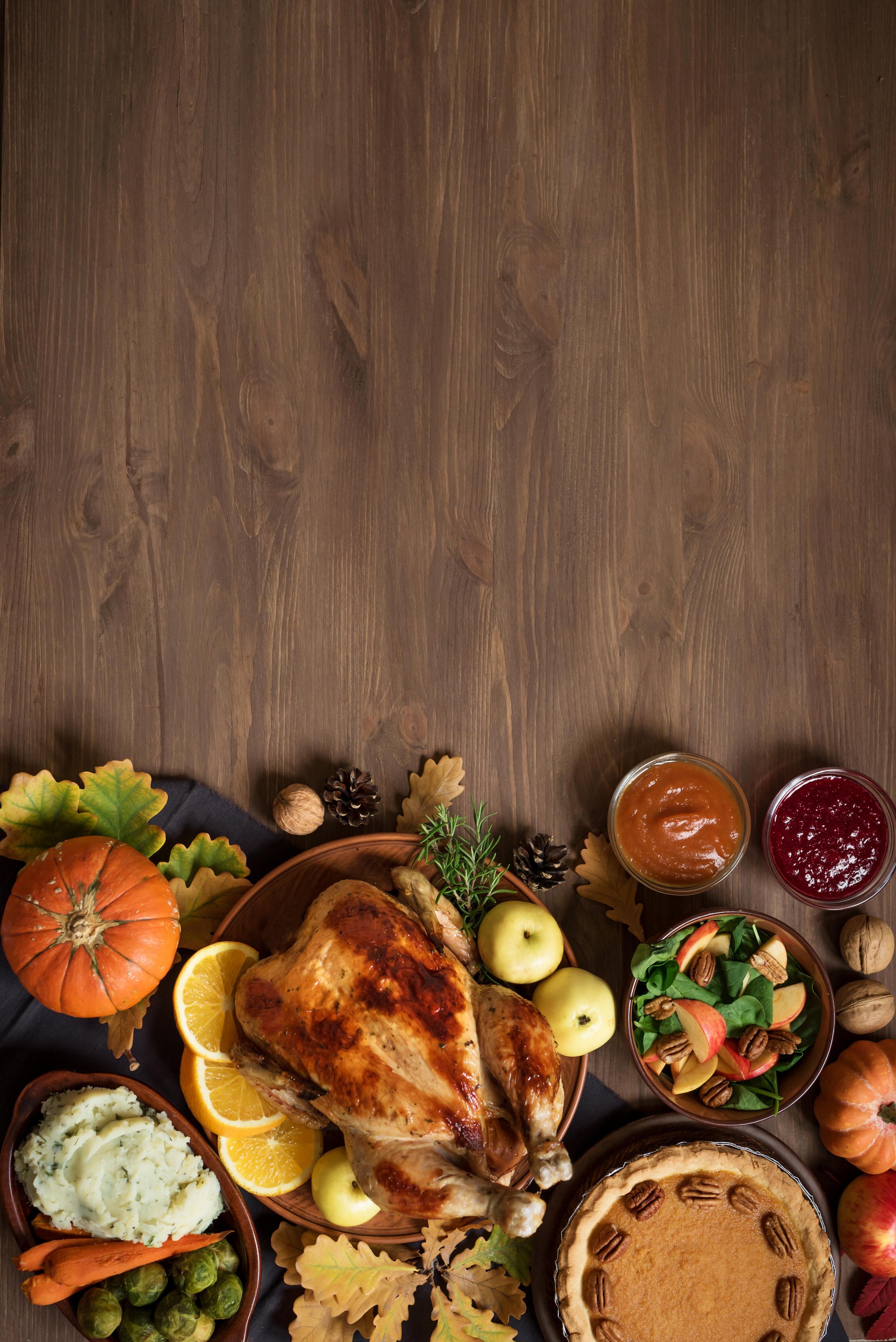

The Thanksgiving table offers a feast of our favorite dishes to share with loved ones, but this annual gathering can lead to food waste, increased energy use, more national travel and other unsustainable excesses. With some planning and simple adjustments, we can make the holiday more environmentally conscious. Reducing our carbon footprint is the best way to show our gratitude to Mother Earth.
• Assign others to bring specific dishes and remind them to use reusable containers for leftovers.
• Shop for seasonal produce and meats at nearby stores and farmers markets to minimize food travel.
• For turkey or other meats, choose pasture-raised and certified-humane options.
• For plant-based eaters, consider a savory lentil loaf, vegan bisques and satisfying baked squashes, including pumpkins stuffed with quinoa and roasted vegetables.
• Avoid packaged foods and make some things from scratch, such as quick baking-powder biscuits.
• To reduce food waste, save produce scraps such as the outer layers and ends of onions, carrot bits, celery leaves, mushroom stalks and herb stems to make vegetable broth for soups and gravies.
• Set the table with cloth napkins and reusable tableware.
• Inform guests of the recycling bin’s location.
• Drive on off-peak days for less stress,

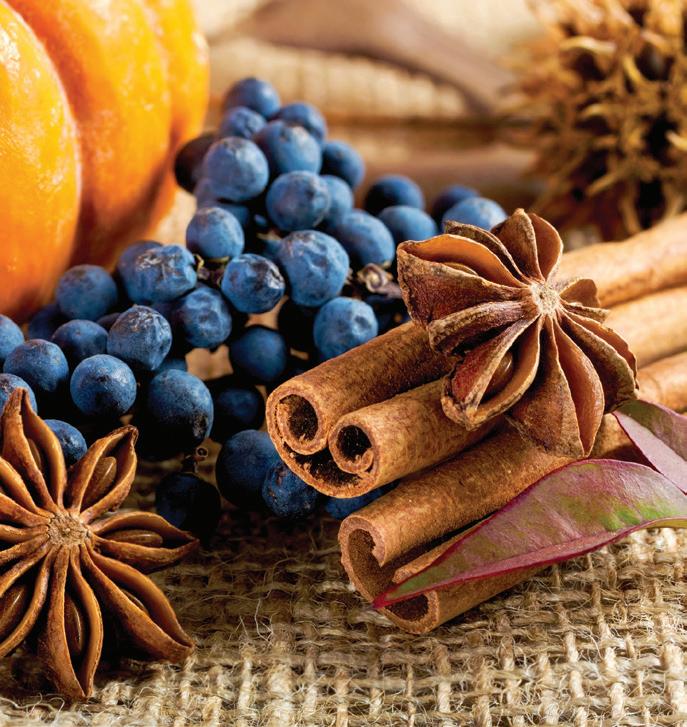
quicker transit and less fuel wasted sitting in traffic. Consider taking a train or bus instead of flying or driving.
• When driving, bring reusable containers and water bottles for snacks and beverages.
• Decorate the table with leaves and dried plants from the yard, baskets of real grapes and other fruits, or beeswax candles.
• Express gratitude to each guest around the table for joining the celebration and for the qualities that make them special.
• Volunteer at a local food pantry or community Thanksgiving meal.
• Freeze leftovers, including soup, stuffing and desserts for subsequent meals and snacks.
• Pack up a generous plate or two for a neighbor, single mom or friend.
by Monica Vidal

Life would feel gentler if it came with a “recalculating” feature to guide us after a meaningful loss.
When a GPS says “recalculating,” it means something changed—a missed turn or an unexpected detour. Grief mirrors that moment, redirecting life after someone we love is gone.
According to the American Psychological Association Dictionary of Psychology, grief is “the anguish experienced after significant loss, usually the death of a beloved person.” When loss occurs, many believe they must “get over it.” The truth is, the person we lost will always be missed. Grief becomes part of who we are, much like a scar that remains after a wound heals. Over time, that scar can become a quiet symbol of love and resilience.
Healing is possible, but it is not about forgetting. We move with our grief, learning to integrate it into our lives. Rediscovering purpose often marks the beginning of this new journey. For many, caregiving once filled that role—a demanding yet meaningful expression of love. Studies show that having a sense of purpose is one of the strongest factors in overall well-being.
Caring for the body strengthens the spirit. Gentle movement, nourishing food and professional support nurture both physical and emotional health. Keeping the mind active also supports healing. Exploring new interests, learning a language or reading long-awaited books can awaken curiosity and joy. Local libraries often serve as both educational and social spaces, offering opportunities for connection.
Social interaction helps ease isolation. Small gatherings, community groups or simple acts of service bring comfort and companionship. Meaningful connection—at one’s own pace—creates room for light to return to daily life.
Emotional awareness is essential. Each feeling deserves respect, and professional guidance can be valuable when grief feels too heavy.
Many activities offer layered healing. A group exercise class provides both movement and social support. A grief group brings shared understanding and empathy. Creative pursuits like art, writing or knitting stimulate the mind while nurturing the heart. Teaching a skill to others can renew purpose and bring fulfillment.
The holiday season can intensify feelings of loss. Much of this stems from the expectations of how things “should” be or once were. Creating new traditions can bring peace and authenticity. Choosing how to spend the holidays—whether with close family, a few friends or in quiet reflection—helps reclaim meaning. Honoring a loved one through a favorite recipe, a written message or an act of kindness can turn sorrow into love in action. Some find healing through service, such as volunteering to help those in need. Each gesture of remembrance keeps connection alive in a new form.
Grief may remain a lifelong companion, but it can evolve. With compassion, intention and support, it becomes a gentle reminder of love that continues to guide the heart. Professional counselors, support groups and community organizations can offer help when the emotional weight feels too heavy to carry alone.
May this holiday season bring peace, comfort and moments of quiet gratitude as love and memory intertwine.
Monica Vidal is a passionate advocate for mental wellness and personal growth based in the United States. Originally from Sao Paulo, Brazil, Vidal brings a diverse cultural perspective to her work. With a background in developing and facilitating expressive group workshops, she is dedicated to promoting holistic well-being. Currently pursuing her MA in Happiness Studies, she is committed to understanding and addressing the societal pressures that shape perceptions of happiness. Through her work, Vidal aims to empower individuals to navigate their own paths to happiness and fulfillment, free from the confines of artificial standards set by the media and society. To connect with her, email MonicaVidal@TheHappinessHealthConnection.com or visit TheHappinessHealthConnection.com.
by Hannah Tytus
It’s six o’clock in the evening, and the sun has already set. The body is whispering for a warm cup of tea and rest, yet the to-do list stretches on: emails and carpools, fundraisers and school practices, appointments and dinner still to be cooked. The desire for rest is overridden by our self-imposed need to get it all done. The colder season, however, brings an opportunity to shift how we see rest and productivity, inviting us to move in harmony with the cycles of nature.
“Our culture has fed us the myth that we can grow and achieve ceaselessly,” explains Kari
Leibowitz, Ph.D., a psychologist, speaker, workshop facilitator and author of How to Winter. “The idea that this growth is linear and steady, with no breaks, is a myth and a fantasy. So much of the winter woes and the burnout of the season comes from a mismatch between our natural rhythms, our expectations and the demands of the world. Winter is an invitation to slow down.”
As with every other living being, we are intimately connected to nature’s cycles. “We are animals, and we live on a planet. And
almost every other living thing on this planet changes its behavior with the seasons,” observes Leibowitz. “Because we have electricity, artificial light and calendars, we have deluded ourselves into thinking that we can—and should—maintain the same routines and productivity levels year-round.”
This spirit of connectedness is echoed by Shamini Jain, Ph.D., adjunct professor at the University of California San Diego, founder of the Consciousness and Healing Initiative, and author of Healing Ourselves: Biofield Science and the Future of Health. “When we own that we’re part of a universe that has its ebbs and flows, we pay attention to the seasons,” she notes, adding that Indigenous medicine and wisdom have long honored natural cycles, seeking to answer the same question we ask ourselves today: “How can I show up and be most efficient in my service?”
This ancient orientation toward seasonal rhythms is not just a philosophical concept. Anthropological studies suggest that our ancestors likely slept more in the cooler months, falling asleep soon after sunset and rising before dawn. They got the most sunlight in the morning, aligning their body’s


cycles with temperature and light cues provided by nature. Contrast this with modern life, where we stay active well after dark, are exposed to sleep-disrupting blue light, wake with alarms and regulate our environment with thermostats that erase natural temperature shifts. By structuring our lives around modern demands, we resist nature’s rhythms. The result, says Jain, is chronic stress, fatigue and burnout.
As autumn transitions into winter and the holidays approach, many of us face greater demands to cook, shop, perform, travel or coordinate complex schedules, yet our resources of time and energy remain the same—or even ebb—as daylight hours shorten and our bodies naturally slow down and produce less vitamin D because of a decrease in sunlight exposure.
“Whenever demands exceed resources, we become stressed,” says Dr. Sharon Grossman, physician and author of The Burnout Solution. Chronic stress has a cumulative effect on our bodies, causing what is known as an allostatic overload, which, according to Yale Medicine, can lead to emotional exhaustion, cynicism, detachment, reduced creativity, brain fog, disrupted sleep, physical aches and pains, or even social withdrawal.
“We often think of stress as a thing that lives ‘out there’, but stress is actually an internal perception that we have. It’s not always about the circumstances themselves; it’s about what you’re telling yourself about the circumstances that creates the stress,” explains Grossman.
A 2016 study in Anxiety, Stress, & Coping examined the effects of altering our perspective on stress. Participants were encouraged to see it as a potential source of energy and resilience, rather than
harmful. Those that applied this change in mindset reported better moods, enhanced cognitive performance and healthier physiological responses during a stressful task.
Try this psychological exploration: Identify limiting beliefs by journaling about the specific fears and guilt that come with saying “no” to a request for help. Next time someone asks for something, politely decline and observe the outcome. Check if expectations of conflict or hurt were unfounded. This approach challenges limiting assumptions and helps us set healthier boundaries, thereby reducing stress and enhancing emotional well-being.
We often have countless ideas about how we should behave, and many of these beliefs hold us back. Grossman emphasizes that every “yes” adds to our demands. “If you’re going to say ‘yes’, understand why you’re saying it,” Grossman cautions. “It should serve a purpose, because our resources are limited.” In practical terms, we have to either lower the demands we accept or increase our resources, such as time or support, to meet them.
For Leibowitz, setting boundaries becomes easier when guided by values. If we want Thanksgiving to feel lighthearted and memorable, that might mean skipping elaborate dishes, accepting a less-than-perfect home and prioritizing rest so we can be present and joyful.
When a new request comes in, pause and reflect on how it aligns with personal values. Consider whether we are acting out of pressure. Release such commitments to make room for a new, better-aligned invitation.
Simple breathing practices can profoundly calm the nervous system. “The point is to breathe—nice inhales, long exhales—and in letting out a long exhale, make a sigh of relief,” Jain advises, suggesting that sounds like “ooo” or “ahh” during exhalation enhance emotional release. Just five minutes of intentional breathing can make a
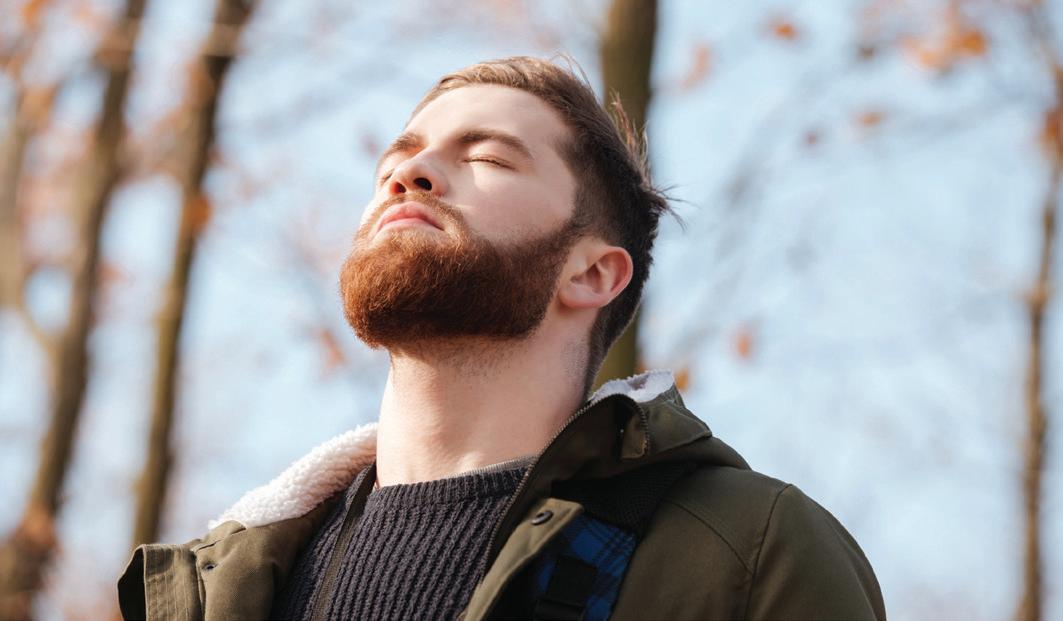
measurable difference. Studies have demonstrated that longer exhales stimulate the vagus nerve, activating the rest-and-digest system, while calming the fight-or-flight response. This reduces heart rate and blood pressure and signals the brain to relax.
Try this breathing exercise: Sit or recline comfortably. Inhale gently through the nose, then exhale through the mouth, allowing sound to escape—this can be a sigh, a groan or a vowel tone. With each round, allow the exhale to lengthen naturally, releasing tension.
According to Jain, “Singing, whether by yourself or in groups, helps harmonize the body’s rhythms, decreases inflammation and activates the nervous system’s rest-and-digest response.” A 2016 study by London researchers, published in ecancermedicalscience, demonstrated that just one hour of group singing reduced stress and improved mood, with saliva tests indicating lower levels of cortisol (the body’s main stress hormone) and changes in immune markers associated with resilience.
Bringing the benefits of song can be as simple as singing or humming a tune while washing dishes, showering or driving to work. Knowing the lyrics isn’t necessary; the vibrations alone create a positive resonance in the body.
Every breath we take is a dance between humans and plants. The oxygen they expel fuels us, and our exhaled carbon dioxide sustains them. This exchange is part of the deep bioelectric communication connecting us to the natural world.
“Fresh air, movement and connecting with nature are all natural antidepressants. Even a few minutes outside can be a powerful way to shift your experience,” says Leibowitz. A 2016 review of 52 Japanese studies found that spending time in nature measurably relaxes the body. Being around forests, plants or green spaces calms the nervous system, improves brain function, balances hormones and strengthens the immune system.
Try this outdoor palliative: Find a patch of earth and stand barefoot. With eyes closed, imagine releasing the day’s energies down into the ground. After a few breaths, visualize energy flowing back up, reinvigorating the body.
Mind-body-spirit practices offer powerful ways to find inner serenity. “They are effective in harmonizing the nervous system, reducing inflammation and opening our connection with heaven and Earth,” asserts Jain. Tai chi and qigong, which blend flowing movements with focused attention, breath and relaxation, have been shown in

studies to pacify the overactive sympathetic nervous system and promote deep relaxation. Yoga offers similar effects. A 2020 review of 12 studies with nearly 675 healthy adults found consistent reductions in perceived stress, confirming yoga’s power to ease everyday tension.
Practicing these modalities under the guidance of a professional helps reduce risk of injury. Look for a tai chi, qigong or gentle yoga class in the community. Many studios offer a free first class or sessions in a local park.
In a culture that glorifies hustle, reclaiming rest is an act of healing. Jain asserts, “We can move through the winter of our mind and body, allowing it to deeply rest so that when spring comes, we can move forward with more energy—for the right things, as opposed to everything.” Nature offers a model for this wisdom. Although the natural world seems to be still in winter, vital work occurs beneath the surface. Just as fruit trees need a cold dormancy period to bloom again, we also require periods of quiet renewal. Our cycles of stillness are as essential to growth, creativity and productivity as our cycles of action.
Rest is more than sleep; it is a way of tuning in. “When we slow down, it’s not just about regeneration,” explains Jain. “It’s about listening to the body’s wisdom, slowing down enough to access deeper intuitions and guidance about our next steps.” Our cycles of rest serve as a teacher. By slowing down, we gain the wisdom, focus and resilience to fully embrace a life renewed.
Hannah Tytus is an integrative health coach, researcher and content creator for KnoWEwell, P.B.C., as well as a former writer at the National Institutes of Health.


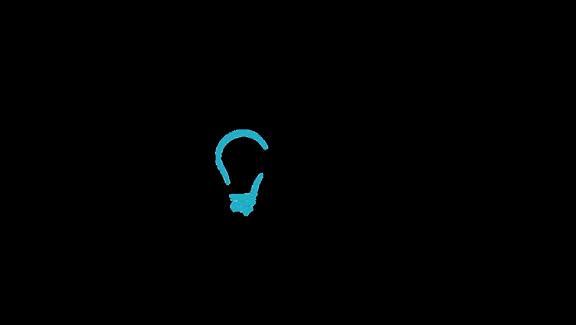




by Marlaina Donato
Approximately 34 to 36 million people in the United States live with Type 2 diabetes, yet many cases go undiagnosed. Additionally, about 88 million individuals have prediabetes, a reversible condition marked by higher blood sugar levels that have not yet reached diabetic status. Glucose stability is crucial for everyone and can be the root cause of symptoms like low energy (especially in the afternoon), mood swings, increased belly fat, food cravings, brain fog, hormonal imbalances and loss of libido.
Fluctuating blood sugar levels affect all of us, especially after high-carb meals or skipping meals. Our diet directly influences
our metabolic processes. By choosing nutrient-dense foods, replacing high-sugar and high-carbohydrate snacks with healthier options and timing meals wisely, we can achieve balance. Incorporating blood sugar-stabilizing spices and herbs into daily meals can also have a positive impact.
“Because glucose is a crucial fuel of the brain and body, there are many backup systems and ways to create glucose,” explains Iginio Stoppa, a naturopathic doctor at Sonoran University of Health Sciences, in Tempe, Arizona. “The absorption of glucose from our food, the production of glucose mainly from the liver and the breakdown of the storage
form of glucose called glycogen is what contributes to what we see as blood sugar.” Stoppa also notes that we may notice when our blood sugar is off. Low blood sugar, for example, is often felt through symptoms like anxiety, weakness, tingling, sweating and palpitations.
“Everyone experiences natural rises and dips throughout the day. Skipping meals, leaning on caffeine for energy, eating a lot of refined carbohydrates or grabbing quick, processed snacks can all cause sharp spikes, followed by sudden crashes,” says Jennifer Ribaudo, a clinical herbalist, educator and owner of Desert Moon Botanicals, in Gilbert, Arizona.
It is advisable to avoid high carbohydrate and sugary foods, especially in the morning or before bed. Instead, opt for complex carbohydrates like lentils, beans, sweet potatoes and oats to provide essential macronutrients and prevent glucose spikes. Sonoran University recommends eating certain foods in a specific order, such as eggs or

avocado before bread and roasted vegetables with olive oil before pasta, to manage glucose levels.
Jacqui Garrison, a San Diego-based health coach, suggests eating most calories before dinner and having an earlier, lighter evening meal to reduce overnight blood sugar spikes that can negatively affect sleep quality. She recommends 30 to 40 grams of clean protein per meal; if animal protein is included, five ounces or the size of a loose fist is ideal. Aim for two servings of leafy greens, colorful veggies or whole fruit per meal, equivalent to half the plate or two open hands. Add one to two thumb-sized portions of healthy fats such as avocado, olive oil or nuts to complete the meal.
For snacks, Garrison suggests a hard-boiled egg or hummus with a handful of carrots, a cup of edamame in the pod or nitrite-free turkey slices in the afternoon. For an evening boost, she recommends “something light and protein-forward like half a cup of cottage cheese with cinnamon and berries.”
Stoppa supports high-quality protein and naturally low-glycemic index foods like wild blueberries, blackberries and chickpeas, which provide polyphenols and saponins that slow glucose absorption.
Ribaudo emphasizes that blood sugar-supportive herbs can smooth out fluctuations. “Using herbs for blood sugar balance doesn’t have to be complicated. A little cinnamon can be stirred into oatmeal, blended into a smoothie or sprinkled into roasted vegetables or beans. Fenugreek seeds work beautifully in soups, curries and

lentil dishes, while moringa leaf powder blends smoothly into salad dressings, sauces or soups.”
Ribaudo also recommends Gymnema sylvestre tincture for pancreatic support and long-term glucose balance, making sugary foods less tempting. Stress-reducing holy basil (tulsi) tea is beneficial during afternoon slumps. She stresses the importance of consulting a professional, especially for those on blood sugar-lowering medications or prone to hypoglycemic dips, as effects can accumulate.
Marlaina Donato is an author, painter and composer. Connect at WildflowersAndWoodSmoke.com.


This is a perfect late-autumn breakfast or snack with protein, healthy fats and complex carbohydrates.
YIELD: 1 SERVING
½ cup organic rolled oats
1 Tbsp ground flaxseeds
¼ cup organic, unsweetened peanut, almond or sunflower butter
1 to 2 Medjool dates, finely chopped
¾ cup unsweetened coconut, almond or soy milk
½ tsp vanilla extract
½ tsp powdered Ceylon cinnamon
Place all ingredients in a bowl or Mason jar and stir well.
Store overnight in the refrigerator for cold oats or on the counter for room-temperature oats in the morning.
Recipe courtesy of Marlaina Donato.
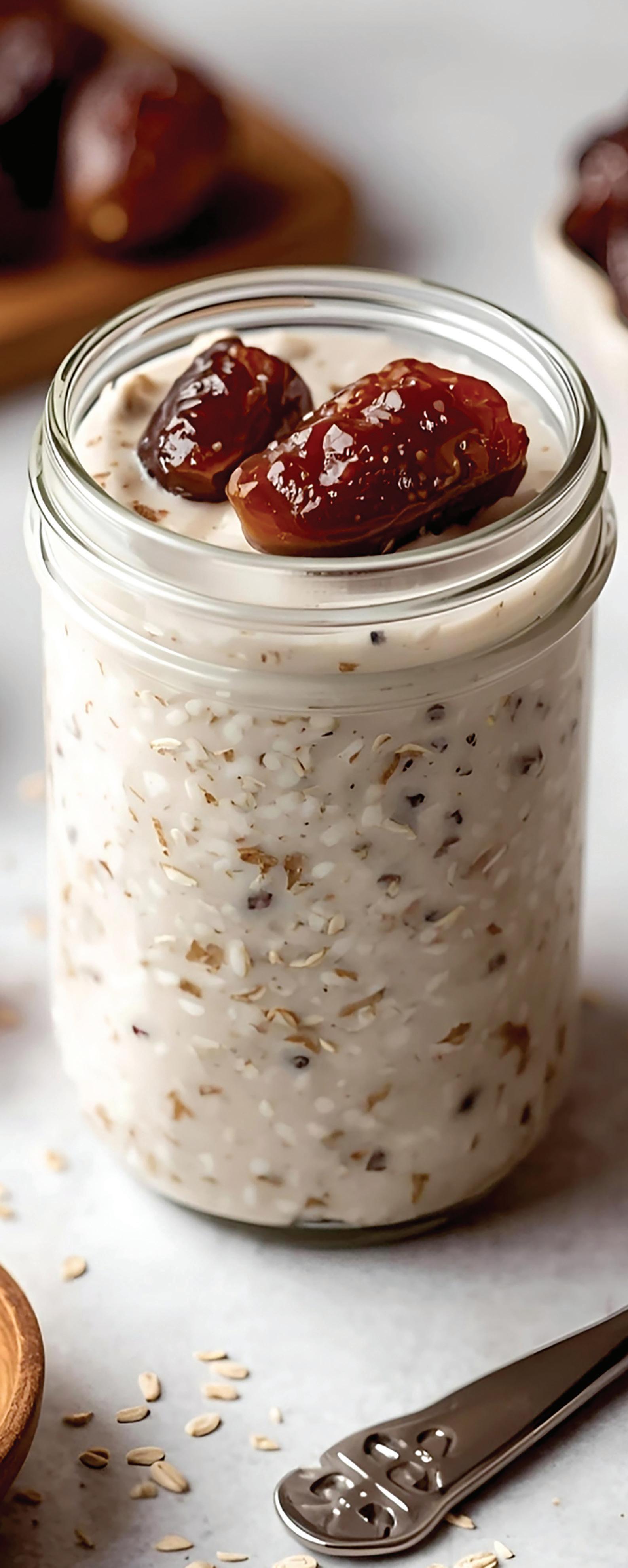
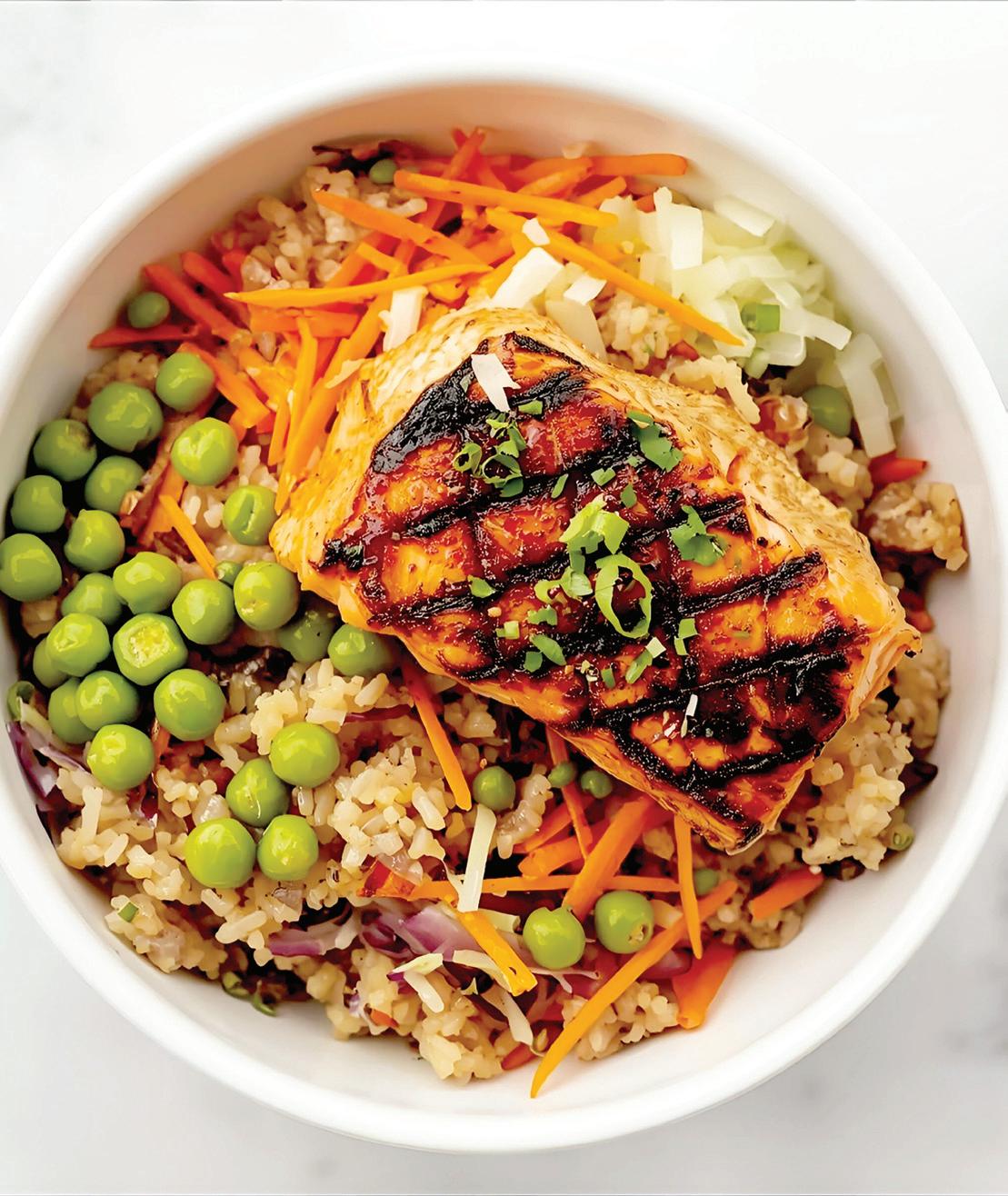
This delicious, nutrient-dense meal is packed with healthy fats, fiber
and omega-3 fatty acids.
YIELD: 1 SERVING
4 oz salmon
½ cup whole grain brown rice
½ cup edamame
1 Tbsp scallions, chopped
1 Tbsp fresh cilantro, chopped
½ cup carrots, shredded
½ cup cabbage or bok choy, shredded
½ Tbsp sesame seeds
1 Tbsp coconut liquid aminos
1 Tbsp rice vinegar
Cook the rice according to package instructions. Steam and shell the edamame. Sauté the cabbage or bok choy, if using. Grill the salmon and season to taste.
Layer cooked rice, edamame, carrot and cabbage or bok choy in a bowl. Add salmon.
Whisk coconut aminos and rice vinegar together then pour over the contents of the bowl and sprinkle with sesame seeds. Top with scallions and cilantro.
Recipe courtesy of Jacqui Garrison.

YIELD: 1 SERVING
1 scoop vanilla protein powder
1 scoop collagen powder
2 Tbsp basil seeds
½ cup water
½ cup unsweetened coconut milk
¼ cup frozen mango
¼ cup frozen pineapple
1 cup frozen greens
½ cup cauliflower, riced

YIELD: 2 TO 3 SERVINGS
5 medium-sized, organic sweet potatoes
3 cups low sodium vegetable broth
1 13.5-oz can unsweetened Thai coconut milk, well-stirred before use
2 Tbsp olive oil
1 tsp regular or vegan ghee
1 to 2 tsp Grade-A maple syrup or increase coconut sugar, below
1 tsp coconut sugar (2 to 3 tsp if omitting maple syrup)
¼ tsp powdered cinnamon
¼ tsp powdered ginger
½ tsp smoked paprika
½ tsp salt
OPTIONAL TOPPING
1 Tbsp extra virgin olive oil
Smoked salt, to taste
Coconut sugar, a sprinkle to taste
½ tsp curry powder
½ cup raw pumpkin seeds
Chop sweet potatoes into 2-inch chunks and add to a medium-size pot; cover with broth. Bring to a boil and cook until tender, approximately 15 minutes.
Place the cooked sweet potatoes, hot broth, half a can of coconut milk and all other ingredients into a blender and blend until smooth.
Pour the sweet potato bisque into bowls until half full. Spoon a tablespoon of coconut milk in a swirling pattern into the soup. Serve immediately.
Combine all ingredients in a blender and whip until smooth.
Recipe courtesy of Jacqui Garrison.
For the optional pumpkin seed topping, heat olive oil in a pan with the smoked salt, coconut sugar and curry powder. Add pumpkin seeds to the hot pan and toss around until they are browned but not burned. Remove from heat and sprinkle a tablespoon or more of the toasted seeds on top of the sweet potato bisque.
Recipe courtesy of Marlaina Donato.
by Jordan Peschek, RN-BSN
In today’s fitness landscape, recovery extends beyond rest days. Holistic therapies are revolutionizing the way we approach physical restoration by integrating mental clarity, emotional resilience and energetic balance. From ancient techniques to cutting-edge innovations, these modalities offer comprehensive support for restoring harmony to body and mind. Selecting the best modality depends on personal preference and availability. Here are some popular recovery techniques.
Sauna Therapy: Infrared and traditional saunas can reduce inflammation; improve oxidative stress; alleviate pain, stiffness and muscle soreness; and improve perceived readiness or recovery time. In addition to its benefits for recovery, research suggests
that regular sauna therapy may reduce high blood pressure and the risk of heart disease, stroke and neurocognitive diseases.
Contrast Therapy: Exposing the body to alternating hot and cold temperatures, such as sauna therapy followed by a plunge in a cold-water bath, has become a staple in many athletic and integrative wellness settings. A 2023 systemic review published in PLoS One found that contrast water therapy significantly reduces muscle soreness.
Massage Therapy: Regular massages can support athletic performance. A 2020 systemic review and meta-analysis in BMJ Open Sport & Exercise Medicine involving more than 1,000 participants in 29 studies reported that massage improves flexibility

from
and delays muscle soreness. It also benefits emotional well-being by lowering stress and anxiety while improving mood and self-image.
Self-Myofascial Release: This technique uses foam rollers to massage the fascia—the connective tissue that wraps around muscles and organs. A 2024 review of 25 articles, conducted by researchers in Spain, found it improves flexibility and range of motion, decreases muscle soreness and enhances perceived recovery.
Chiropractic Care: This modality includes spinal manipulation, joint mobilization and soft tissue techniques to manage the health of athletes and non-athletes. By focusing on the musculoskeletal system, chiropractic adjustments promote optimal function and pain relief, while reducing muscle stress. This type of care is effective in treating common conditions, such as lower back pain, muscle strain and joint dysfunction, caused by fitness activities. Chiropractic care and spinal manipulation also support the regulation of the autonomic nervous system to ease depressive symptoms.
Acupuncture: A pillar of traditional Chinese medicine, acupuncture uses fine needles to stimulate energy points along the body’s meridians, decreasing muscle soreness and tension while increasing muscle activation to prevent injury. “Acupuncture helps relieve inflammation by lowering the levels of oxidative stress in the body,” explains Ayako Mizuno, a doctor of acupuncture and oriental medicine in Wauwatosa, Wisconsin. “It also stimulates the nervous and endocrine systems, which can help create calming and relaxing effects that reduce stress.”
Float Therapy: Also known as sensory deprivation, flotation involves a tank filled with magnesium-rich Epsom salt water, allowing the body to float effortlessly, free from external stimulation. This results in deep physical and mental relaxation. A 2024 randomized controlled study found
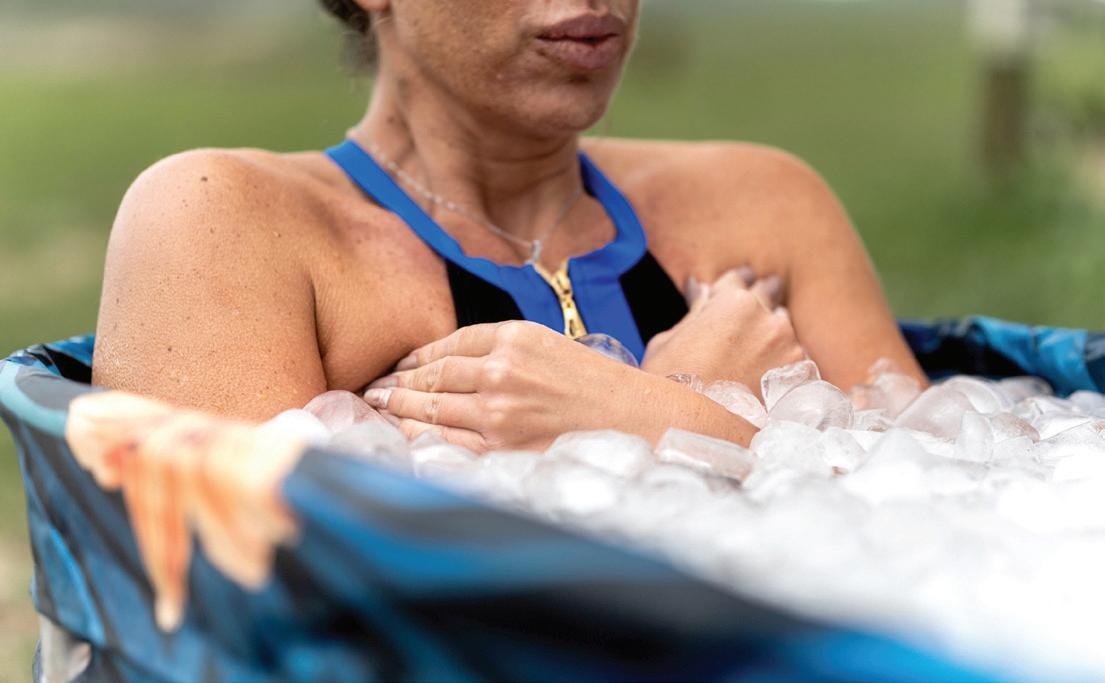
that multiple sessions of float therapy were well-tolerated, safe for anxious and depressed individuals, and induced positive emotional experiences in individuals with anxiety and depression.
2025 concluded that these garments reduced the decline in muscle strength after exercise-induced muscle fatigue.
These therapies support the body’s natural healing abilities while honoring the deep connections between physical health, emotional regulation and energetic alignment. Integrating one or more of them may enhance physical recovery, emotional well-being and vitality. Listen to the body’s needs and explore the modalities that resonate most.
Jordan Peschek has a background in personal training, yoga instruction and mental health nursing. She publishes the Milwaukee and Twin Cities editions of Natural Awakenings.





by Hannah Tytus
Cortisol, the body’s main stress hormone, plays several important roles in human physiology. Produced by the adrenal glands, this multifunctional messenger operates on a 24-hour clock, peaking in the moments just before waking from sleep in the morning, slowly tapering off throughout the day and returning to low levels at night to support rest.
When in balance, cortisol helps regulate inflammation, blood pressure and blood glucose, allowing the body to adapt to life’s changing demands. This rhythm is intimately connected to the circadian rhythm, or sleep-wake cycle. But when sleep is irregular or stress becomes chronic, cortisol levels can fall out of sync—too high at night, too low in the morning or fluctuating unpredictably.
“Stress is neither good nor bad. It gets us out of bed in the morning. Cortisol is part of that natural rhythm,” says Dr. Sharon Grossman, a burnout recovery strategist and author of The Burnout Solution

“When cortisol becomes imbalanced, it can affect memory, sleep and even immune function. The key is to find the sweet spot.”
Shamini Jain, Ph.D., an adjunct professor at the University of California San Diego, founder and president of the Consciousness and Healing Initiative, and author of Healing Ourselves: Biofield Science and the Future of Health, explains, “If we have dysregulated cortisol rhythms because we don’t have regular sleep, or we have too much stress and we’re not handling the origins of the stress, then we could create chronic inflammation in the body, and we could have mental health issues as a result.”
The seasons affect our circadian rhythm. The sleep-wake cycle becomes more stable in autumn and winter, with longer time spent in bed, slightly more total sleep time and higher daytime activity compared to warmer months. While cooler weather often encourages more rest, it can also intensify feelings of sluggishness if cortisol and sleep cycles are not aligned. Jain recommends these simple practices that help keep cortisol and circadian rhythm in balance, even as the seasons change.
• Stick to a consistent sleep schedule. Going to bed and waking at the same times each day helps the body reset. Ayurvedic wisdom, the ancient science of life originating in India, recommends being asleep before 10 p.m. and rising before 6 a.m. to align with the body’s natural cycles.
• Create wind-down rituals. Just as children benefit from bedtime routines, adults can cue the body for rest through calming activities like reading, journaling or reflecting on the day’s positive aspects.
• Establish bedroom boundaries. Reserve the bedroom for sleep and intimacy and practice a digital detox in the evening to reduce stimulation. Avoiding blue light from screens before bed allows melatonin, a sleep hormone, to rise naturally. “But it’s not just about the light,” Jain points out. “It’s about the activation of the mind. Consider a book instead.”
• Add simple relaxation practices. A warm foot soak or shower before bed, deep breathing exercises or restorative yoga asanas like waterfall pose can prepare the body for rest.
• Curb caffeine. Limiting caffeine in general, and particularly after noon, can help ensure a more restorative sleep.
• Start the morning well. Exposure to natural sunlight shortly after waking can reset the circadian rhythm, prompting alertness and energy.
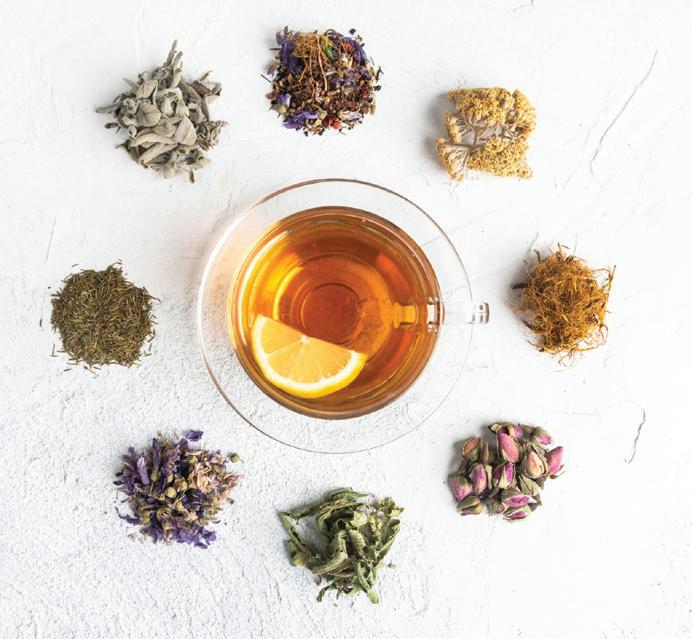
Certain supplements, herbs and lifestyle swaps can help calm the nervous system and prepare the body for restorative slumber.
• Magnesium Glycinate: This highly absorbable form of magnesium is gentle on the stomach and has been shown to improve both the quality and onset of sleep.
• Gamma-Aminobutyric Acid (GABA): Supplementing with this inhibitory neurotransmitter may ease an overactive mind before bed.
• Beverage Swaps: Replacing late-day coffee with alternatives such as herbal
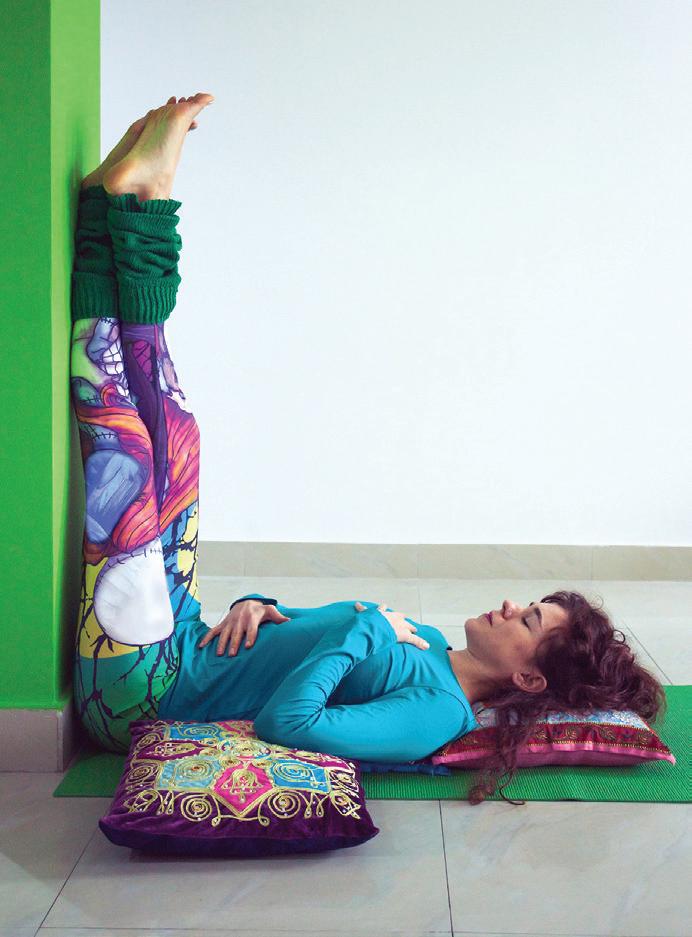
tea, a mushroom-based latte or ginseng can reduce cortisol spikes that interfere with sleep.
• Herbal Allies: Adaptogens like ashwagandha help modulate cortisol levels, while calming herbs such as chamomile or passionflower promote relaxation and better sleep quality.
Incorporating these strategies can help synchronize cortisol rhythms and encourage deep, restorative sleep. As the days grow shorter and colder, honoring the body’s natural rhythm becomes even more important. Slow down, embrace rest, and work with the cycles of light and dark.
Hannah Tytus is an integrative health coach, researcher and content creator for KnoWEwell, P.B.C., as well as a former writer at the National Institutes of Health.




by Christina Connors
Mornings set the tone for a child’s entire day. When rushed or chaotic, they can cause stress, fatigue and difficulty focusing in school. By using simple, intentional routines, mornings can become a source of grounding, positivity and energy, helping kids feel calm, nourished and mentally prepared for the day ahead.
Science Behind Structured Mornings
Research confirms what many parents intuitively know: Consistent routines significantly impact a child’s development. “Morning routines create rhythm and predictability, which lower stress and help kids feel safe,” says Dr. Joel Warsh, an integrative pediatrician in Los Angeles. “A calm start sets the tone for better focus, mood and energy throughout the school day.”
A 2024 systematic review published in the Journal of Family Theory & Review found that childhood routines are linked to improved cognitive ability, self-regulatory and executive function skills, enhanced social and emotional skills, and better academic outcomes.
The morning meal is vital for sustaining vitality and focus throughout the school day. To stabilize blood sugar and support steady energy, Warsh recommends combining protein, healthy fats and fiber, such as eggs with avocado, chia pudding with berries or a smoothie with spinach and nut butter. This nutritional approach aligns with research showing that proper breakfast consumption directly impacts classroom behavior and academic performance, with students

demonstrating improved attention and participation when well-nourished.
The Movement Connection
Incorporating gentle movement into morning routines achieves more than physical activity. “Short bursts of movement like stretching, yoga or dancing help release nervous energy and signal to the body that it’s time to focus. They also regulate mood and attention,” notes Warsh.
But too much too quickly may not have the desired effect. “Movement will get the blood moving and support in transitioning. But I wouldn’t go from no movement to awake to ‘let’s hustle’. The shift cognitively can become overwhelming,” advises Dr. Isaura González, a clinical psychologist and educator. She suggests a gradual approach, using an alarm with lighting options that slowly transition from dark to bright, and soothing music that supports the nervous system, rather than overstimulating it.
Successful mornings begin the night before. “Good sleep hygiene is the foundation for calm mornings,” emphasizes Warsh. “When kids sleep enough, their mood, focus and cooperation improve dramatically. Set out clothes, prep breakfast, pack lunches and keep backpacks by the door. These small steps prevent chaos and free up space for connection in the morning.”
Organizing a child’s activities takes this preparation further. “Getting a calendar with the month’s school activities is crucial. You don’t want to miss the green T-shirt day,

and then we have a meltdown,” says González. She suggests placing a calendar in a common area such as on the refrigerator so children can independently reference upcoming events.
Sustainable morning routines thrive on cooperation, rather than forced compliance. “Add playfulness and use music, countdowns or games to get tasks done,” recommends Warsh. “Kids are more engaged when mornings feel fun, rather than rushed.”
Involve children in routine creation. “Empowerment is the long game. By doing this, you are scaffolding the behavior, letting them do with your support,” adds González. “Children will often surprise even the most involved parent when you include them in asking for their ideas. As they grow, they will need less and less support, and that’s okay because they will always need you.”
When developing a routine, ensure that it adapts to the child’s age and developmental stage. Warsh offers a simple template: “Wake up, open blinds for morning sun, make the bed, brush teeth, get dressed and eat a nourishing breakfast. End with a hug as you head out the door.”
Both experts agree that successful morning routines require patience and creativity, but the investment pays off in a child’s daily energy, mood and school readiness. With a little effort, families can transform their mornings from sources of stress into launching pads for successful, joyful days.
Christina Connors is a writer, keynote singer and head of music and SEL integration for the Kind Mind Education Program. Learn more at ChristinaConnors.com.

by Ruth Roberts, DVM, CVA, CVH, CVFT, NAN
Virtual care, including online consultations with licensed veterinarians and wellness professionals, has become essential in modern pet health. While many pet parents are familiar with telemedicine, teleadvice is less understood. Comprehending their differences and limitations is important.
The American Veterinary Medical Association defines telemedicine as patient-specific medical care delivered by licensed veterinarians with an established veterinarian-client-patient relationship, which typically requires an in-person examination before a veterinarian can legally diagnose, prescribe or treat via virtual platforms. It complements in-person care, merging professional expertise with convenience.
Through telemedicine, veterinarians can diagnose common health concerns, recommend treatments, prescribe medications where permitted by law and provide follow-up care for ongoing conditions. Everyday issues such as skin irritations, minor allergies, digestive upsets, appetite changes and certain behavioral questions can often be addressed in a video

consultation, giving pet owners reassurance and a clear plan of action. For animals with chronic conditions, virtual check-ins provide a stress-free way to monitor progress without frequent clinic visits.
Telemedicine services are most trusted and valued when delivered by a familiar veterinary provider. A 2024 randomized, controlled clinical trial in the Journal of the American Veterinary Medical Association found that pet owners are highly satisfied with telemedicine conducted by their regular veterinarian and prefer video-based recheck examinations after routine procedures. These findings support earlier research in Preventive Veterinary Medicine indicating that pet owners are willing to pay for telemedicine services provided by their own veterinarian.
Any consultation with non-veterinary professionals or pet health experts is considered teleadvice. It is educational, offering guidance such as encouraging annual wellness exams, promoting year-round parasite prevention or supporting better nutrition and lifestyle choices. While it can enhance a pet’s well-being, teleadvice does not involve diagnosing, prescribing or treating an animal.
Complementary teleadvice can add real value to a pet’s well-being, especially when delivered by certified professionals. Recent research in Frontiers in Veterinary Science demonstrated how video appointments

improved cat parents’ understanding of their pet’s chronic mobility challenges and the application of at-home management strategies. Many pet health coaches deliver their services exclusively through online platforms. These virtual sessions can guide pet parents through dietary planning, safe exercise routines or stress reduction strategies.
Laura Muzal, a holistic intuitive animal practitioner and certified holistic pet health coach, offers virtual consultations focused on nutrition, lifestyle support and energy work. “Meeting with pet parents virtually allows me to understand their concerns in real time, support them from anywhere and help them create simple, practical steps they can follow at home to support their animal’s well-being,” she says.
From the pet parent perspective, online consultations can still be done with compassion while providing ample time to explain strategies and answer questions. Muzal says that pet parents describe

feeling more confident and empowered to address their pet’s recurring health concerns after their virtual sessions. She also gets feedback that pet parents find their pets are calmer and more balanced with online meetings.
With the convenience of virtual consultations comes the responsibility to stay informed. Not every professional offering advice online operates under the same legal or ethical framework. Before booking any virtual consultation, pet parents must confirm who they are speaking with and under what authority they operate. Verifying whether the provider is a licensed veterinarian or a certified pet health expert helps ensure the advice given is appropriate and trustworthy. This clarity allows pets to receive the right care from the right expert at the right time.
Ruth Roberts is an integrative veterinarian and a holistic health coach for pets, as well as the creator of The Original CrockPet Diet. Learn more at DrRuthRoberts.com.





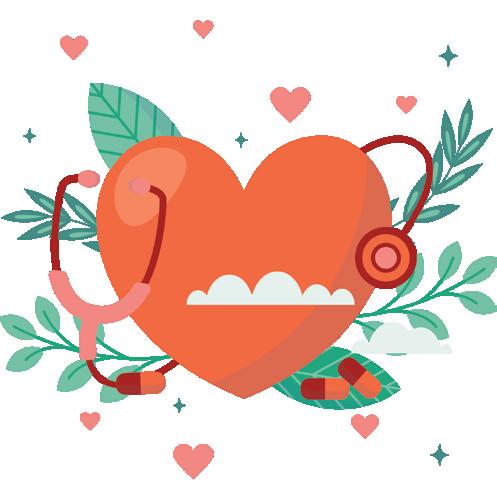
To place a calendar/ongoing/classified event, email content to MsTracy@MidlandsNA.com. Entries must adhere to our guidelines and be submitted by November 10 (for December issue). Call ahead before attending events to avoid any cancellations or changes.
SATURDAY, NOVEMBER 1
Dream Group–10am-noon. Celtic Wisdom Center invites you to join their in-person dream group. Explore your dream world and the hidden messages in dreams. Irmo. Cost: $15. Info/register/location: Edwina@ CelticWisdomCenter.com.
THURSDAY, NOVEMBER 6
Healing Prayer–7:30pm. Celtic Wisdom Center invites you to join them for a virtual contemplative gathering to offer prayers for individuals and community to support healing in the world. Donations appreciated. Info/register/Zoom link: Edwina@ CelticWisdomCenter.com.
SATURDAY, NOVEMBER 8
Teas, Tinctures and Oils–10am-noon. The GROW Farm invites you to learn about specific cool weather herbs and then make your own tea, tincture and oil for health and wellness. Leave with a workbook, a dried herbal tea mix, a tincture and oil you create from herbs grown organically. 216 Singleton Dr, Columbia. Info/register/cost: JoyfulSoulsNursery.com.
Black Vet Fest–2-6pm. From the battlefield abroad to the fight for freedom at home, Black veterans have always stood strong. We gather to celebrate their sacrifice, honor their resilience, and to say thank you. All are welcome. Free. 207 Misty Meadow Rd, Hopkins. Info: UASCInternational.org, UhuruAcademy.com.
MONDAY, NOVEMBER 10
– FRIDAY, NOVEMBER 14
NAOT November Trunk Show–10am-5pm. $25 off all NAOT brand $100 or more. Foot Savi is your number one place for healthy feet. We are more than a shoe store; we are a medical boutique that meets all of your sole’s needs. 7001 St Andrews Rd, Columbia. Info: 803-781-1230.
TUESDAY, NOVEMBER 11
Veteran’s Day Appreciation Drop-In–48pm. Original Origins and PTSD Veterans Village invite you to join us for an evening of gratitude, reflection and community as we honor the brave men and women who have served our country. Together, we remember. Together, we honor. Together, we give thanks. Cost: Free for veterans; $11 for nonveterans. Dogwood Pond, 3800 Elberta St, Columbia. Info: 833-678-7229, OriginalOriginsHW@ gmail.com.
WEDNESDAY, NOVEMBER 12
Spiritual Book Group–3pm. Celtic Wisdom Center invites you for their in-person book group. This will begin their new session. This is a four-week group. Cost: $40. Info/register/ location: Edwina@CelticWisdomCenter.com.
THURSDAY, NOVEMBER 13
In-Person Celtic Service–7pm. Celtic Wisdom Center invites you to join their In-Person Celtic Service at Unitarian Universalist Church. Donations appreciated. 2701 Heywood St, Columbia. Info: Edwina@ CelticWisdomCenter.com.
SATURDAY, NOVEMBER 15
Embracing Sacred Darkness Retreat–9:30am-3:30pm. Rest, reflect and reclaim your light. This is a Celtic retreat for weary souls seeking renewal. Cost: $75 (includes lunch and materials). Clayton Memorial Unitarian Universalist Church, 334 Clayton Memorial Church Rd, Newberry. Info/register: Edwina@CelticWisdomCenter.com.
SUNDAY, NOVEMBER 16
Wellness Circle–3:30-5:30pm. Original Origins’ wellness circle is a supportive and safe space for reflection, connection and growth. Each gathering nurtures mind, body and spirit through intentional practices that inspire balance, vitality and holistic well-being. Meals and materials provided. Cost: $19. Must register in advance. JC Legacy Event Center, 7713 St Andrews Rd, Irmo. Info/register: 833678-7229, OriginalOriginsHW@gmail.com.
FRIDAY, NOVEMBER 21
CPR Instructor Course–9am-3pm. Participants must complete the online portion prior to class. Cost: $350. Level Up Healthcare Academy, 1100 12th St, Cayce. Info/register: Contact Dr. Collette at 803-814-0033 or LevelUpHCA.com.
Drew Book Club–5:30pm. Join us every third Friday of the month for our wellness book club at Drew Wellness Center meeting room. Please bring a whole-food, plant-derived dish to share (optional). Free. Register at the front desk. 2101 Walker Solomon Way, Columbia. Info/register: 803-545-3200.
SUNDAY, NOVEMBER 23
Church of the Wild–9am. Celtic Wisdom Center invites you for an easy wander (stroll and guided reflection) to share a communal encounter with the sacred in nature. Participants should meet at the shelter by the pond. Moore Park, 7507 Eastview Dr, Irmo. Cost/info/register: Edwina@ CelticWisdomCenter.com.
MONDAY, NOVEMBER 24
Virtual Garden Club–6:30pm. Joyful Souls Nursery invites you to join their Seed to Supper virtual garden club. Learn how to grow sustainably in your own space. Cost: $10. Info/register: JoyfulSoulsNursery.com.
Connecting you to the leaders in natural health care and green living in our community. To find out how you can be included in the Community Resource Guide, call 839-228-1158 or email MsTracy@MidlandsNA.com.
DOWDY RUDOLPH CHIROPRACTIC
LLC
Dr. Dowdy Rudolph, DC 1444 Barnwell St, Columbia 803-376-6293 • DowdyRudolphChiro.com
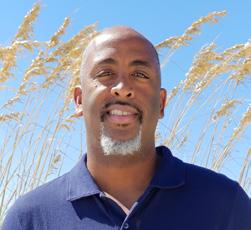
Dr. Gerald Rudolph, DC, focuses on finding the root cause of your problems and not just treating your pain. He utilizes digital X-rays to help diagnose problems, spinal adjustments to stimulate proper movement of spinal and extremity joints, active therapeutic movement exercises to correct movement disorders, and spinal decompression to help relieve numbness and tingling down your arms and legs. Dowdy Rudolph Chiropractic also offers a state-of-the-art full-body lounge hydromassage table that can help you feel more rejuvenated and relaxed. See ad, page 35.
SPRING RAIN HYDROTHERAPY
Linda Salyer
120 Kaminer Way Pkwy, Ste H, Columbia 803-361-2620 • LSalyer@ymail.com

All disease begins in the colon. Constipation; slow, sluggish bowel; gas and bloating? A colonic will help to rid you of these problems. Colonics promote good digestion, help speed metabolism, help lower cholesterol, and help relieve joint pain. Linda Salyer is IACN certified and a retired nurse. Saturday appointments available with an additional small convenience fee. See ad, page 7.
ABUNDANCE MANIFESTOR
Patricia Whyte
PatriciaWhyte.com

Patricia is a global transformational leader and an expert in energy movement and manifesting. She is a certified Diamond Life Coach and Diamond certified in Feng Shui. Feng Shui is the art of creating a harmonious and balanced environment by optimizing the flow of energy within a space. Many people feel stuck or overwhelmed in their careers, relationships or health. Clutter and disorganization are often part of the problem. Patricia offers a solution to help you move forward
and live the life you deserve. Let her help you find your personal key to unlock your true potential and create a life filled with abundance, joy and boundless possibilities.
THE SHIFTING SAND
Juanita Ecker
518-941-9249
Juanita@TheShiftingSand.com
TheShiftingSand.com

Are you tired of turning to food to numb your feelings and finding comfort at the bottom of a snack bowl? Transform your relationship with food and stress. Stress eating isn’t about weakness—it’s about trapped emotions from past experiences that drive you to seek comfort in food. Juanita uses a gentle energy healing technique to identify and release emotional blocks, helping you break free from unhealthy patterns. Together, you’ll create lasting change—without shame or rigid rules. Life’s pressures don’t have to lead to the pantry. Your journey to overcoming stress eating starts here.
PEACEFUL PAUSE HEALING
Dr. Malai Roper
803-814-4001
DrMalai@PeacefulPauseHealing.com PeacefulPauseHealing.com

Dr. Malai Roper is a metaphysician and holistic wellness guide offering therapies that honor the body, mind and spirit. She blends Reiki, sound therapy, Ayurvedic wellness and metaphysical guidance into personalized experiences for women seeking balance and renewal. Her work creates a safe and sacred space for feminine healing, supporting rest, release and reconnection with inner wisdom. Through bodywork, energy medicine and spiritual mentorship, Dr. Malai helps women reclaim their vitality and align with their true essence. She also offers certification trainings in Reiki and Sound Healing for those called to deepen their own path. See ad, page 8.
7001 St Andrews Rd, Ste A Certified Board Pedorthist and Brace Specialist 803-781-1230 • FootSavi.com
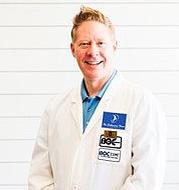
With more than 30-plus years in the footcare/footwear industry, Sion Owen helps with a variety of issues, including gait analysis, foot assessments, custom orthotics, bracing and compression therapy, plantar fascia pain, neuropathy and fitting for therapeutic shoes for patients with diabetes, arthritis, painful bunions, callouses and hammer toes. Call to schedule an appointment! See ad, page 6.
Sylvia Grant, MSW, BSW, GC-C 140 Stoneridge Dr, Ste 430, Columbia 803-606-3032 (text) or 803-386-9069 (call) Info@GriefAndBereavementrc.org GriefAndBereavementrc.org

The Grief and Bereavement Resource Center, founded by Army veteran Sylvia Grant, MSW, provides compassionate support, counseling and educational resources to help individuals and families navigate loss. Rooted in community care, the center empowers people to process grief, find healing, and thrive through shared support and professional guidance. It’s time to stop hurting and start healing. You don’t have to do it alone. Call to make an appointment today.
ABOUT YOUR HEALTH INC
120 Kaminer Way Pkwy, Ste J, Columbia 803-798-8687 • AboutYourHealthSC.com

About Your Health Inc’s main focus is health education and health-enhancing services, including One-on-One Nutritional Counseling, Live/Dry Blood Cell Observation, Mild Hyperbaric Chamber, Ozone Therapies, Thermography, Aqua-chi Footbath, Far Infrared Sauna and more. They also carry hard-to-find natural, organic, wholefood nutritional supplements and products. See ad, page 27.
Tracy R. Jacox • 833-678-7229
OriginalOriginshw@gmail.com
OriginalOriginshw.com
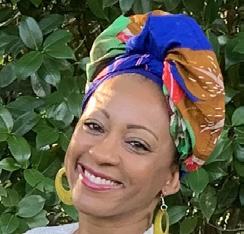
Ms. Tracy has over 30 years of experience in the medical field. Original Origins can assist you with maximizing your health and wellness holistically! Our wide range of services include health coach partnering, comprehensive health evaluations, comprehensive cooking experiences, and a comprehensive kitchen evaluation. Your health is your wealth! See ad, page 3.
Donna Mack
803-766-4913
PositiveProjectionsllc@gmail.com
PositiveProjectionsllc.com

Donna Mack and her team bring over 30 years of combined experience in offering health and wellness classes. Our courses are designed to empower participants to live their healthiest and happiest lives as they age. We’ve seen firsthand how gaining greater understanding of health impacts and making simple changes in lifestyles can lead to real healing. We offer a signature Healthy Body Health class to provide you with an “owner’s manual” for your body, offering practical tools and a personalized plan to help you take charge of maintaining your health for a lifetime. Call to make an appointment today.
Monica Vidal
386-333-2871
MonicaVidal@ TheHappinessHealthConnection.com
TheHappinessHealthConnection.com
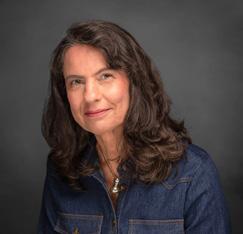
Embark on a journey of creative wellness and discover the art of thriving. The Happiness–Health Connection offers coping tools that empower you to cultivate positive, lasting habits—releasing the happiness already within you. Positive emotions nurture the body and soul, promoting a healthier, more fulfilling life. Whether you seek solace through grief, empowerment for your mind, or the deep bond of self-discovery, our exercises are designed to meet you where you are. Join a community of kindred spirits where emotions inspire creativity, connections flourish, and shared experiences lead to greater joy and wholeness. See ad, page 8.
SPHINX PAW
3400 Two Notch Rd, Columbia 803-754-3922
SphinxPaw.com

Discover a haven for holistic well-being at Sphinx Paw. Sphinx Paw has been at the forefront of healing in the Columbia area since 2007. We offer a diverse selection of herbs, books, candles and incense to support natural detoxification, personal healing and spiritual growth. Embrace your wellness journey with our thoughtfully chosen products and expert guidance. Our distinctive resources promote holistic self-care, natural detoxification, weight loss, personal healing, and spiritual growth throughout all phases of life. Sphinx Paw has everything you need to support you in a life of health excellence and well-being.
EXPECT WELLNESS
Dr. Rachel Hall 130 Suber Rd, Columbia 803-796-1702 • DrRachelHall.com reception@drrachelhall.com
Find us on Facebook for great health tips.
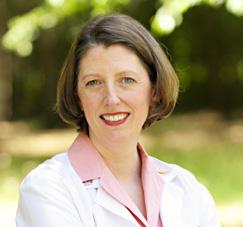
Integrative/Holistic medicine consults for anyone wanting to approach their health more naturally. Dr. Rachel Hall is board certified in both family medicine and integrative holistic medicine. Together we will focus on finding the root of the problem, not just treating symptoms. Call today for a consult if you are looking to achieve balance. In-house diagnostic labs and therapies. See ad, page 25.
JOY LEE CONNOR
Healing Minster at Springhill AtONEment Center 803-447-6499
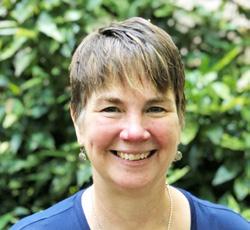
Joy has more than 30 years of experience in energy and bodywork. She teaches Reiki, Touch for Health, Meditation, Yoga, Ayurveda and A Course in Miracles. Joy welcomes and sees clients who are ready to shed guilt and limitations in favor of forgiveness and freedom. One hundred acres of trees surround this pristine location for healing at Springhill AtONEment Center. Nature walks and fireside gatherings available. Contact Joy at 803-447-6499.
JAN SHAW PERSONAL TRAINING & MASSAGE (MAS1935)
806 12th St, West Columbia 803-360-7895 • JanShawHealth.com

Jan Shaw has many years of experience in exercise physiology and massage. She specializes in the John F. Barnes method of Myofascial Release Therapy; holds an M.S. in Exercise Science; has worked in rehab medicine for 10 years re-training patients with a myriad of physical injuries; and is skilled in MFR 1, 2, Unwinding, SES and Cervicothoracic. Whatever your needs, Shaw has the education and experience to help you.
GARNER’S NATURAL LIFE
4840 Forest Dr, Ste 15-A, Columbia 803-454-7700
5166 Sunset Blvd, Ste C, Lexington 803-973-3001
GarnersNaturalLife.com
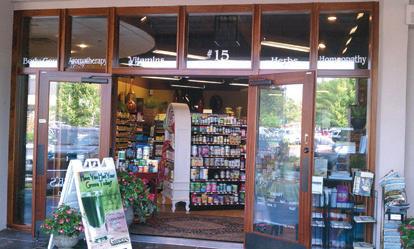
Garners Natural Life is a locally and family-owned natural health store that has been a staple in the community for decades. Improve your health with the purest, most innovative high-quality natural products, including vitamins, herbal supplements and aromatherapy. Their newest product, GLP1 Pro, is a probiotic blend that supports healthy weight management and helps curb food cravings. They also offer a full line of chemical-free shampoos, conditioners and natural soaps. Take your health somewhere it’s never been—visit one of their local locations today. See ad, back page.
PROSPER AND THRIVE PELVIC HEALTH AND WELLNESS
Dr. Kelsey Stegall
120 Sparkleberry Crossing Rd, Columbia 803-250-1836
Kelsey@ProsperAndThrive.co ProsperAndThrive.co
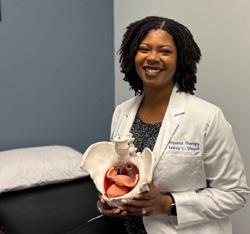
Dr. Kelsey Stegall is a Board-Certified Clinical Specialist in Women’s Health Physical Therapy. Pelvic floor therapy strengthens muscles supporting the bladder, bowels and reproductive organs in men and women. Dr. Kelsey assists men and women in improving bladder and bowel control, as well as enhancing sexual function. Her therapy techniques help women improve recovery after childbirth and gynecological procedures, and she also assists men in improving recovery after prostate surgery and men with pelvic pain and dysfunction.
LUVEVA AESTHETICS SPA
Eva Rigney, RN
Certified Esthetician 630-17 Promenade Pl, Ste 401, Columbia LuvevaSpa.GlossGenius.com

Eva Rigney is an Aesthetic Nurse and an Army Veteran. She has been in the medical field for more than 20 years and focuses on her lifelong passion of skin care. She incorporates updated and newest innovations in esthetics, such as permanent makeup (PMU), including 3D areola, Botox and more. She enjoys providing facial and body treatments, along with advanced techniques. She shares her knowledge on skin care, and assists with recommendations of the Luveva skin care line. “My goal is to help everyone achieve revitalized healthy skin,” she says. See ad, page 5.
CELTIC WISDOM CENTER
Edwina@CelticWisdomCenter.com CelticWisdomCenter.com

The Celtic Wisdom Center is an eco-spiritual nonprofit community that embraces Celtic worship, contemplative practices, and spiritual direction. Through unique offerings like wander walks and contemplative nature experiences, we invite individuals to connect with the divine through nature and engage in Earth-centered practices that foster spiritual community. At the Celtic Wisdom Center, the timeless wisdom of the Celtic spiritual heritage helps transform the ordinary into the sacred. This is a holy and safe space to explore your spiritual path, deepen your connection with the divine, care for the Earth, and find a supportive community dedicated to holistic living. All are welcome.
SEW AND HEAL
Jacquelyn Odom
7825 Broad River Rd, Ste 200, Irmo 828-590-1228
SewAndHeal@gmail.com
SewAndHeal.My.Canva.Site

Sunday Jazz Brunch–Noon-3pm. Every Sunday. Chayz Lounge invites you to enjoy an elevated brunch experience. Reservations required; must be 21 and older. There is no cover charge. Chayz Lounge, 607 Meeting St, W Columbia. Info: 803-563-8375, ChayzLounge.com.
Arboretum Open House–1-4pm. Every third Sunday. Come and enjoy a nature walk through the W. Gordon Belser Arboretum, a wildlife preserve in the heart of Columbia. Pets are not permitted. Pathways are natural and pass through hilly terrain. Restroom facilities are not available. Free admission. W. Gordon Belser Arboretum, 4080 Bloomwood Rd, Columbia. Info: Arboretu@mailbox. sc.edu.
Virtual Healthy Living Support Group –7pm. Every third Sunday. Virtual support group via Zoom. Uplift, support and encourage one another while making necessary changes for better health and wellness. Info/ register: Contact Ms. Tracy at 839-228-1158 or OriginalOriginshw@gmail.com.
Grief Support Group –1-2pm. Every second and fourth Monday. Connect with others that have experienced loss and the challenges that living with grief brings. Free. Leeza’s Care Connection, 201 St Andrews Rd, Columbia. Info: 803-888-7525, LeezasCareConnection.org.
Survivors of Suicide Loss (SOS) –7-8:30pm. Every first Tuesday of the month. This is a peer-led group, not a place for someone that is in crisis of suicide. If you are in crisis, call or text 988 or text TALK to 741741. Westminster Presbyterian Church, 1715 Broad River Rd, Columbia. Info: 803-622-1512, SOSColumbiaSC@gmail.com.
Early-Stage Dementia Support Group–12pm. Every third Thursday. In-person and virtual. This group is for caregivers and families adjusting to a new diagnosis of some form of dementia. Free. Leeza’s Care Connection, 201 St Andrews Rd, Columbia. Info: 803-888-7525, LeezasCareConnection.org.
Art W/ Coping of Loss–6:30-8pm. Every fourth Thursday. Dr. Delores Gulledge teaches to use art as medicine when dealing with loss and grief. No experience required. Free. Leeza’s Care Connection, 201 St Andrews Rd, Columbia. Info: 803-888-7525, LeezasCareConnection.org.
Palmetto Trivia–7-9pm. Every Thursday. Teams compete for prizes awarded to the top three finishers. Trivia takes place outside in pleasant weather and moves indoors to the Bierkeller hall during inclement conditions. Free parking is available in the deck on Canalside Street. The Bierkeller, 600 Canalside St, Ste 1009, Columbia. Info/cost: BierkellerColumbia.com.
Thursday Night Jazz Party–8-11pm. Every Thursday. The Aristocrat hosts a Thursday Night Jazz Party featuring various artists and musicians. Guest musicians welcome to join in. Free admission. The Aristocrat, 1001 Washington St, Columbia. Info: ExperienceColumbiaSC.com/event/jazzparty-at-the-aristocrat/68104.
B.I.O.M.G.–10-10:40am. Every Saturday. Join The Village parent support group virtually. This support group is for all parents. Being a parent can be challenging. You have a village to help you maneuver through tough times. Free. Info: Contact Rashika “Ro” Davis at 803550-9837 or BlackIceomg@gmail.com.
Sew and Heal is a nonprofit organization founded by Jaqueline, inspired by her journey of using sewing as an outlet to overcome the challenges of PTSD, anxiety and depression stemming from her military trauma. The organization empowers women and children to find healing and creativity through the art of sewing, turning pain into purpose. Sew and Heal provides a safe and supportive space for healing through sewing. Their mission is to foster emotional well-being, creativity and connection.

